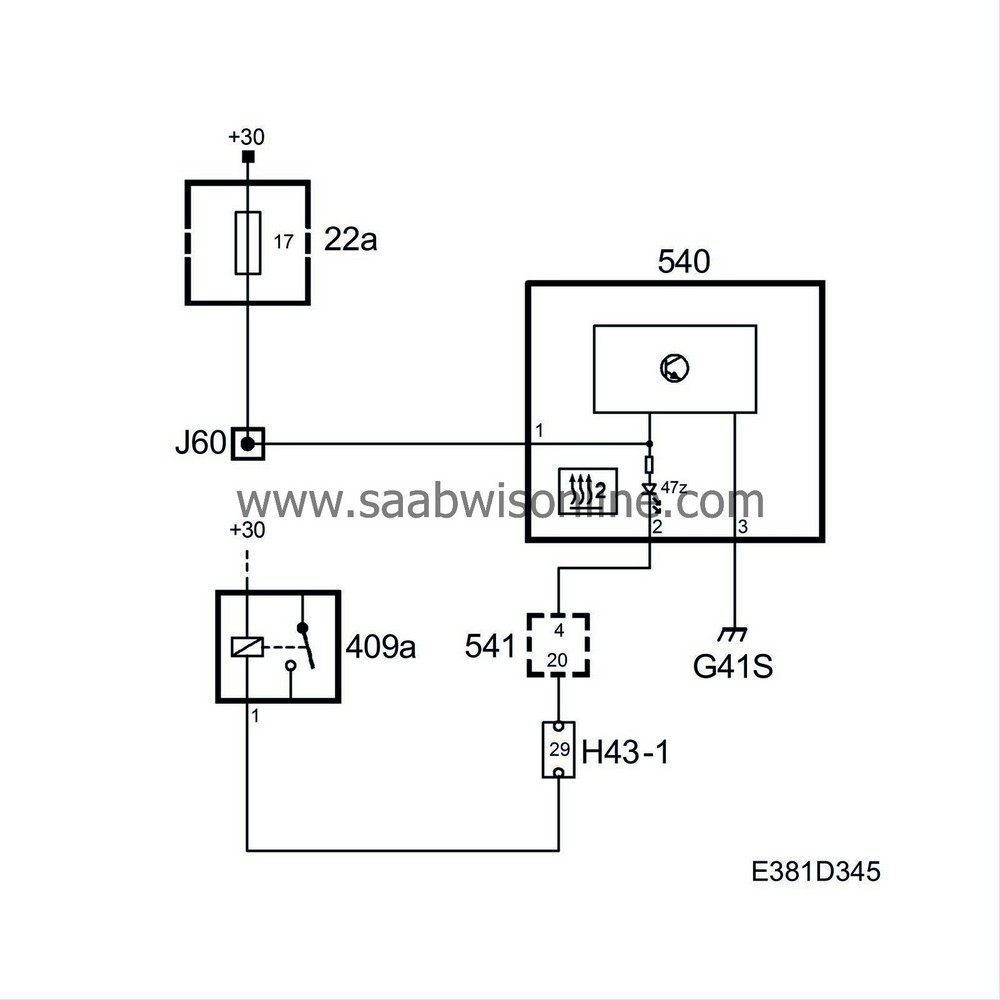PRE-RELEASE
Warning and indicator lamps
| Warning and indicator lamps |
An acoustic signal is incorporated to indicate that a fault has arisen which relates to the safety of the car.
The acoustic signal is activated when one of the warning or indicator lamps is lit.
The acoustic signal is also activated if the coolant temperature is high.
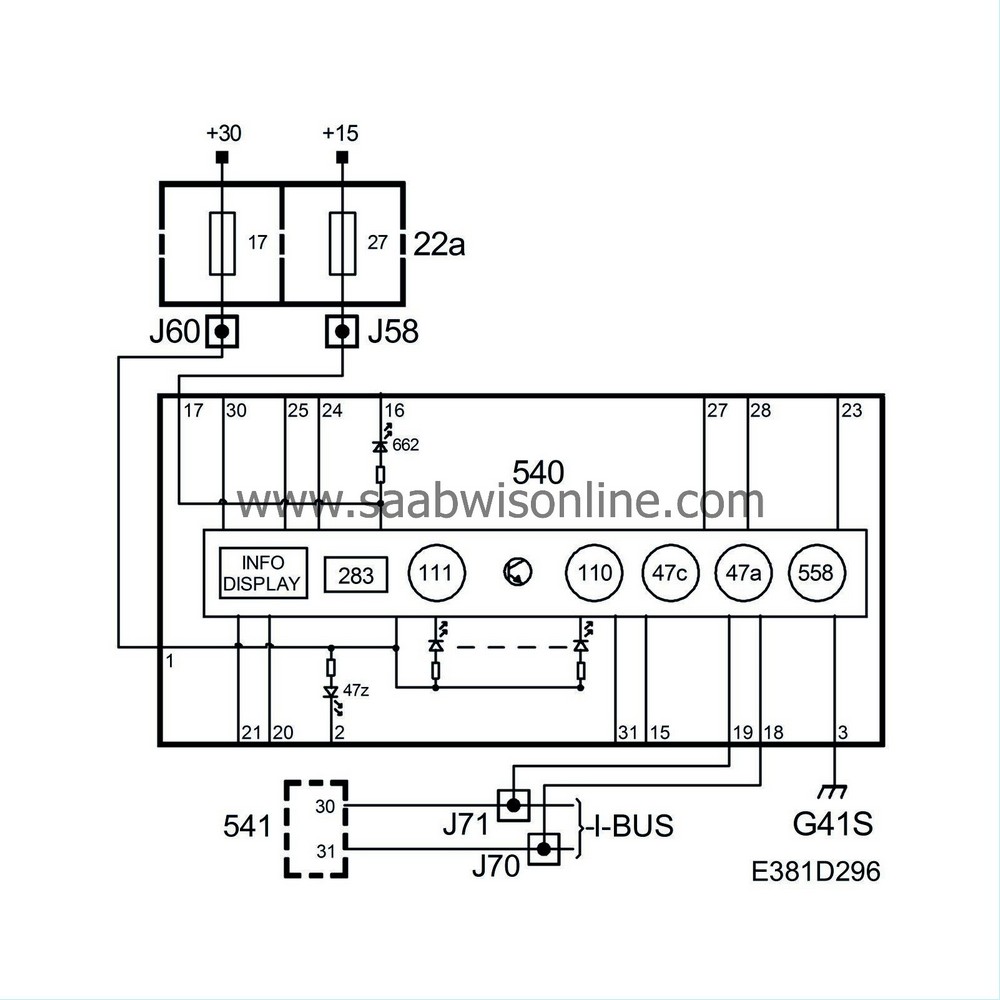
| Oil pressure warning lamp |
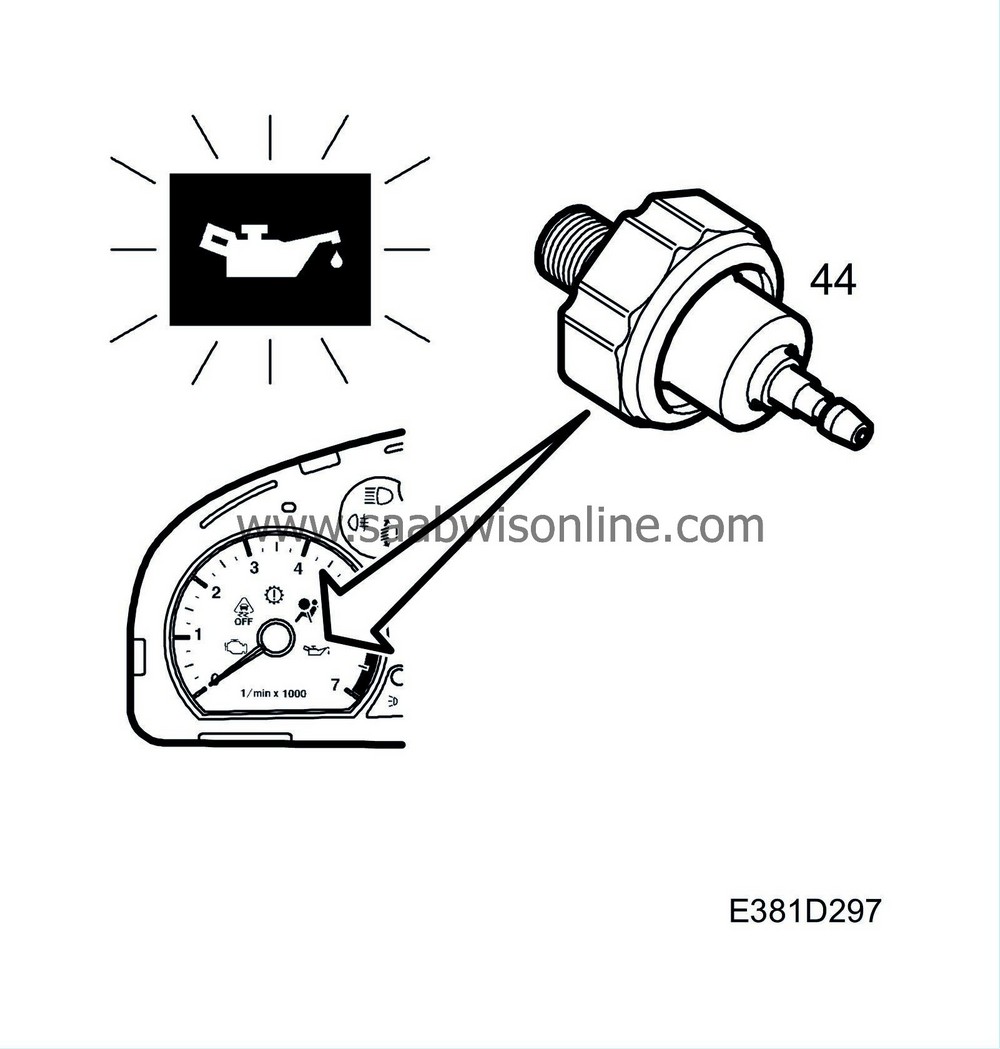
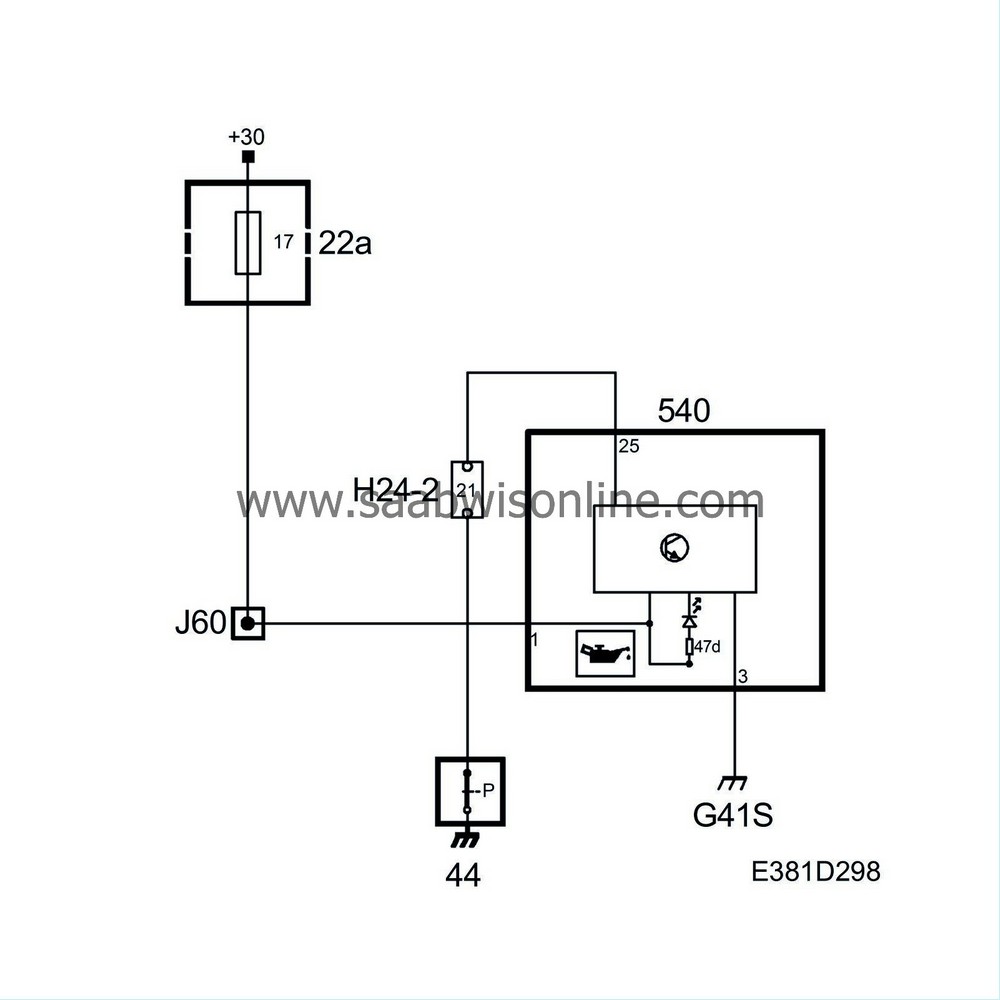
The oil pressure warning lamp is located in the tachometer. The lamp warns the driver when the oil pressure is too low.
The switch in the oil pressure sensor closes if the oil pressure is less than 0.3-0.5 bar. Pin 25 in the main instrument unit is grounded and the control module switches on the lamp. At engine speeds exceeding 300 rpm the MIU sends a message to the SID control module requesting an acoustic signal.
Diagnosis
The function has no diagnostics.| Charge warning lamp |
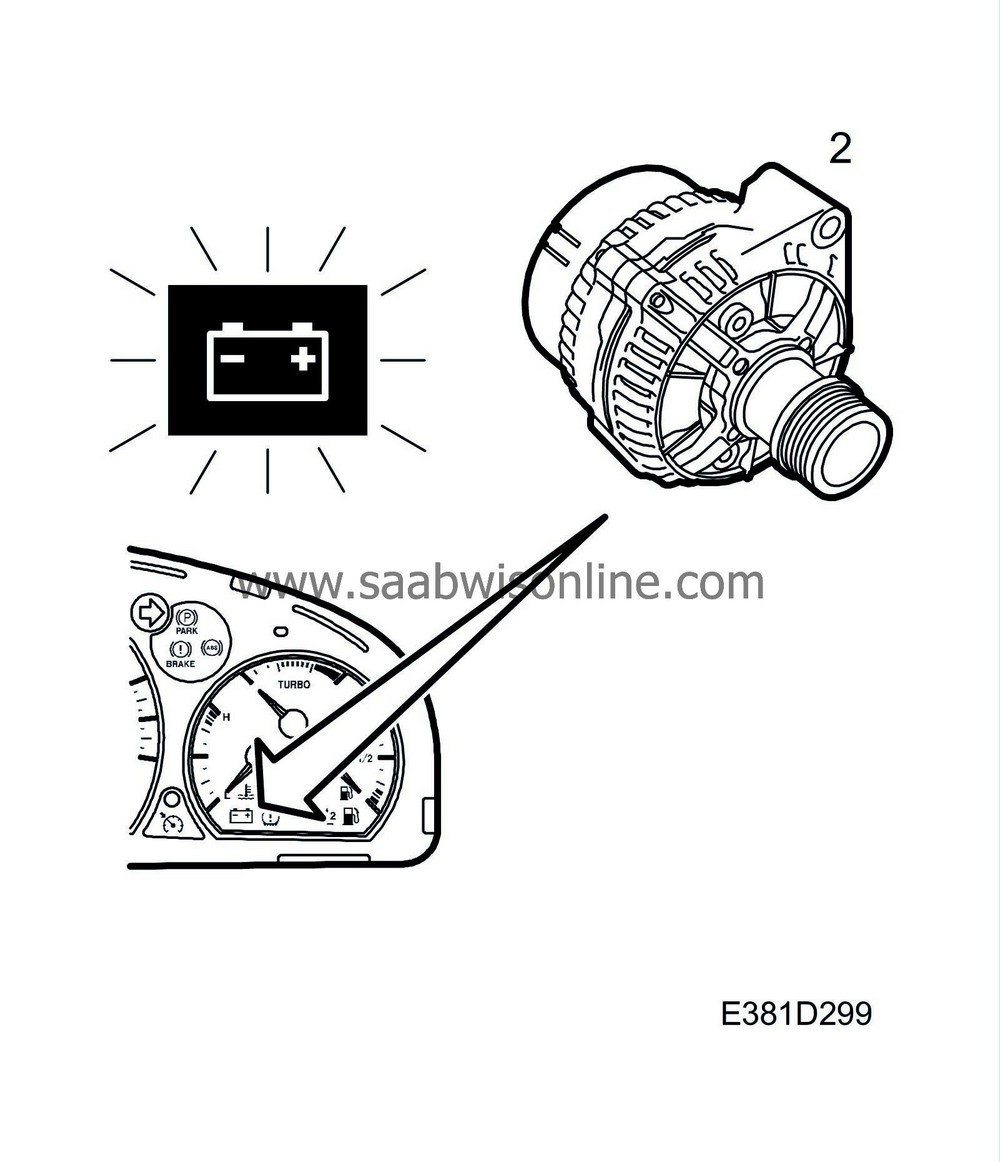
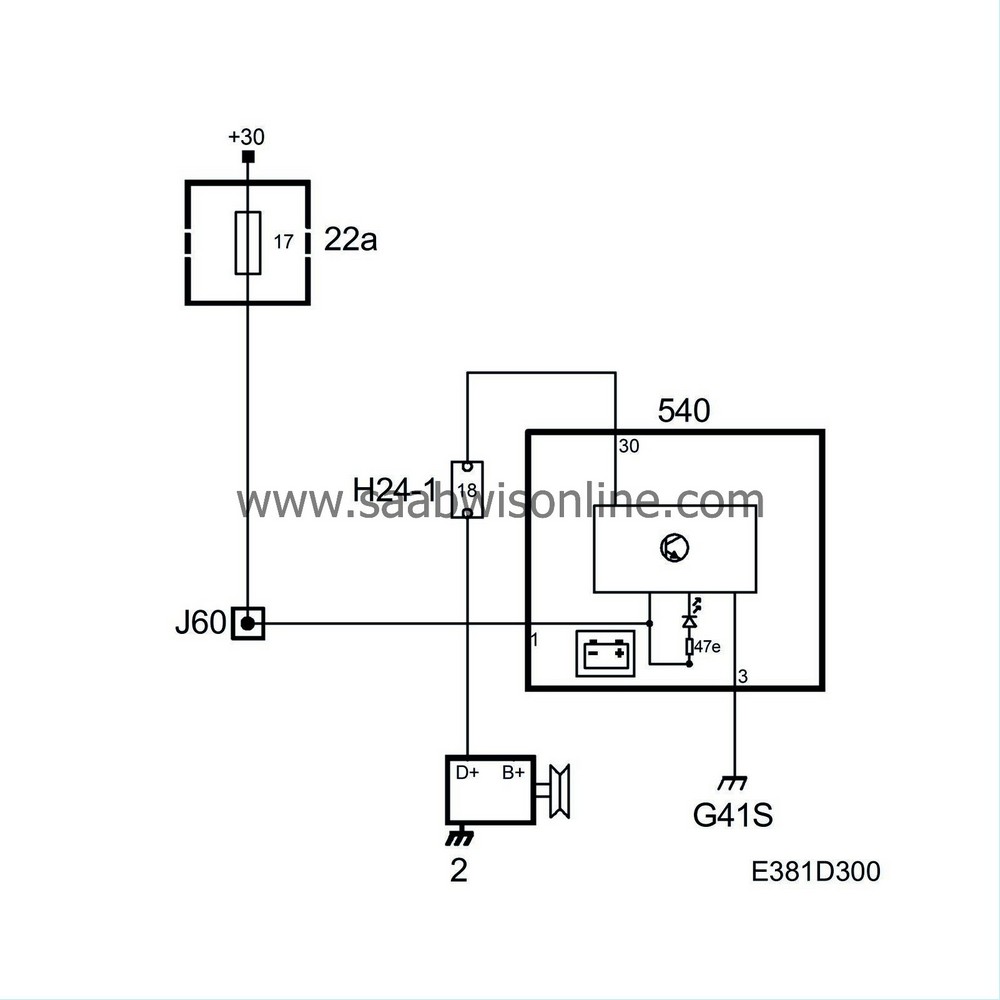
The charging warning lamp is located near to the temperature gauge and indicates to the driver whether or not the alternator is charging.
The lamp is supplied from the main instrument unit and grounded internally in the main instrument unit.
If the alternator is not rotating or for any other reason it is not charging, pin 30 on the main instrument unit is grounded through the alternator field winding via the regulator. The control module then switches on the lamp. At engine speeds exceeding 300 rpm the MIU sends a message to the SID requesting an acoustic signal.
When the generator is charging, D+ on the generator has the same voltage as B+ on the generator, which means that the input on the MIU is supplied with power B+ whereupon the control unit turns off the lamp.
Diagnosis
The function has no diagnostics.| Warning lamp, AIRBAG |
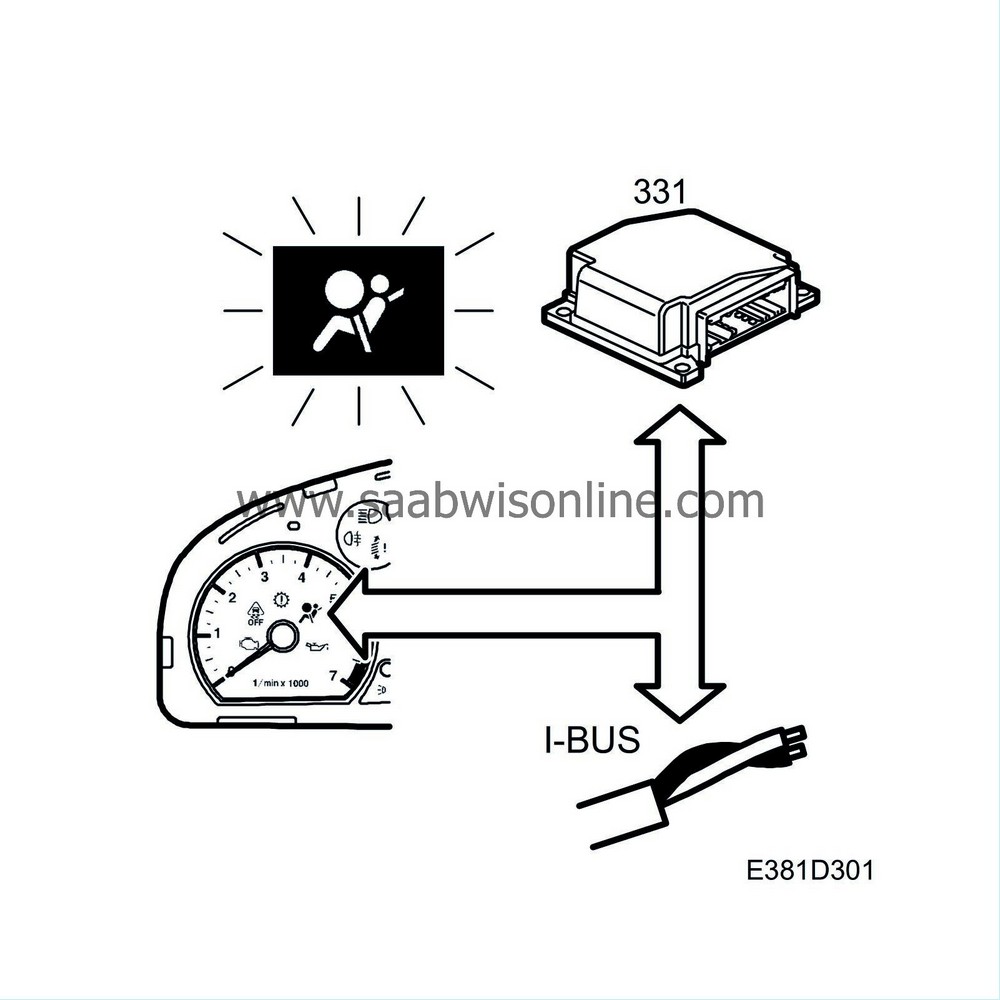
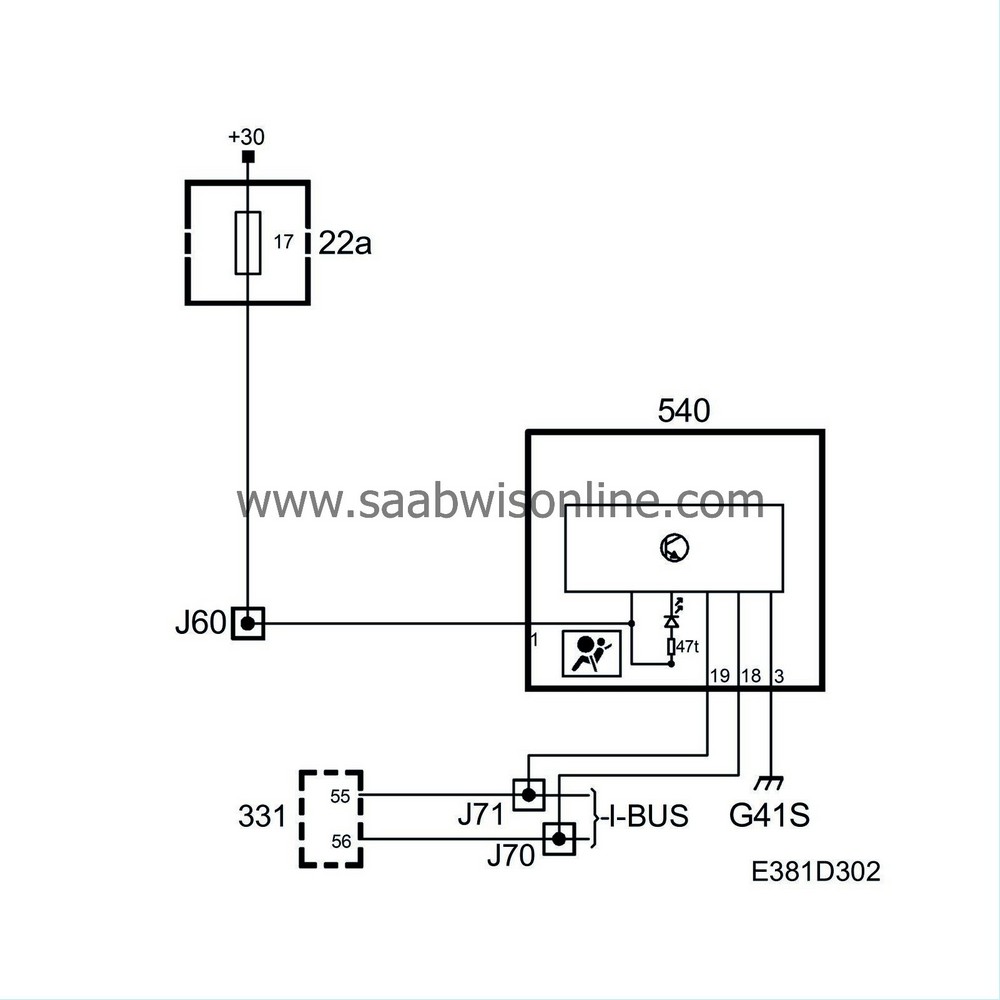
The air bag warning lamp is located in the left-hand section of the main instrument unit, by the tachometer.
A fault in the system is indicated by the airbag warning light coming on permanently.
When functioning normally, the Airbag control module (ACM) sends a bus message to switch off the airbag warning lamp. If this message is not present the MIU will switch on the lamp. In certain circumstances the ACM can also transmit an illumination command on the bus in order to switch on the lamp as quickly as possible.
At engine speeds exceeding 300 rpm the MIU sends a message to the SID control module requesting an acoustic signal.
When the ignition key is turned to the start or drive position, the airbag warning lamp comes on for 3-4 seconds before then going out if no trouble codes are stored.
If there are trouble codes stored, the lamp will light for 3-4 seconds, then go out for half a second, and then come on permanently until the ignition is turned off or the trouble code is cleared.
If an airbag or belt tensioner has tripped, the airbag warning light is lit constantly.
Diagnosis
The function has no diagnostics.| Warning lamp, brake fluid level |
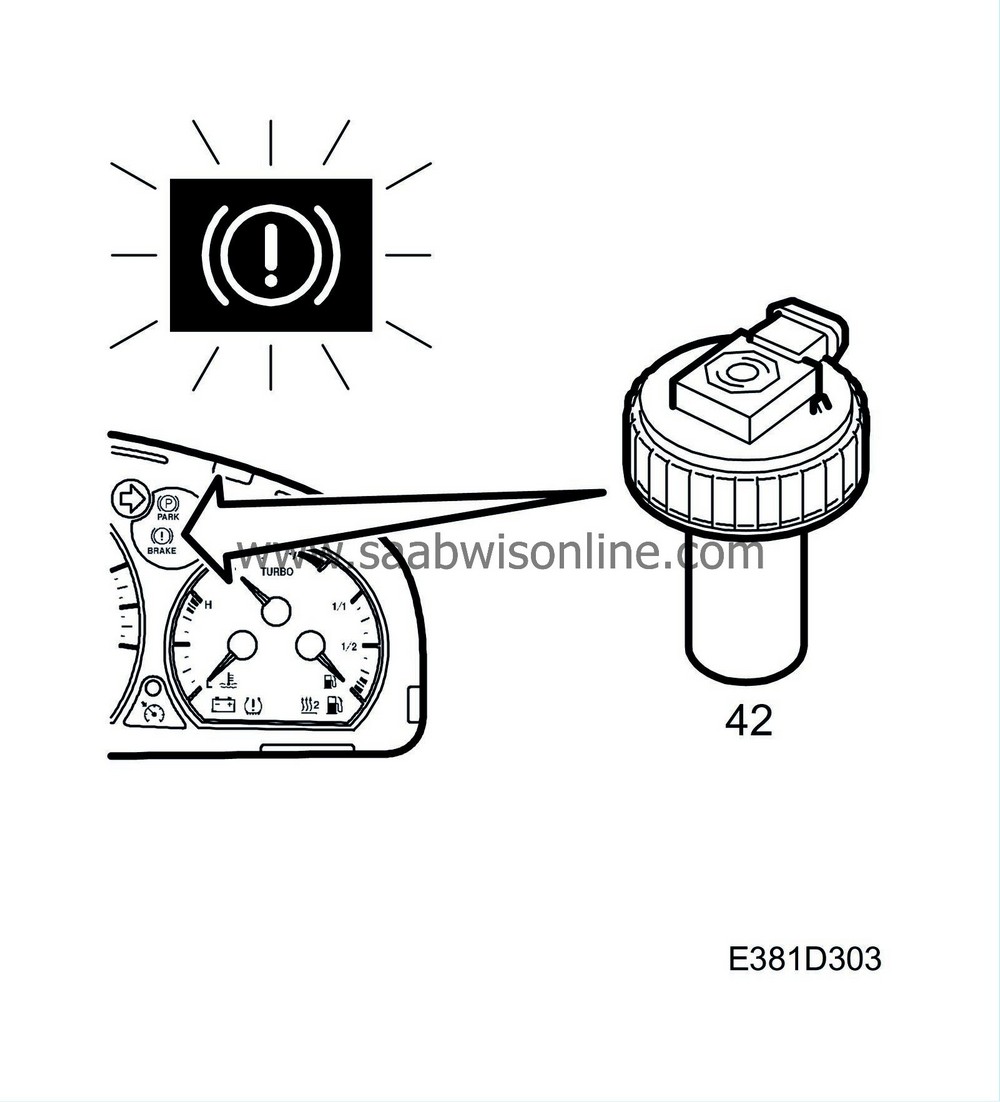
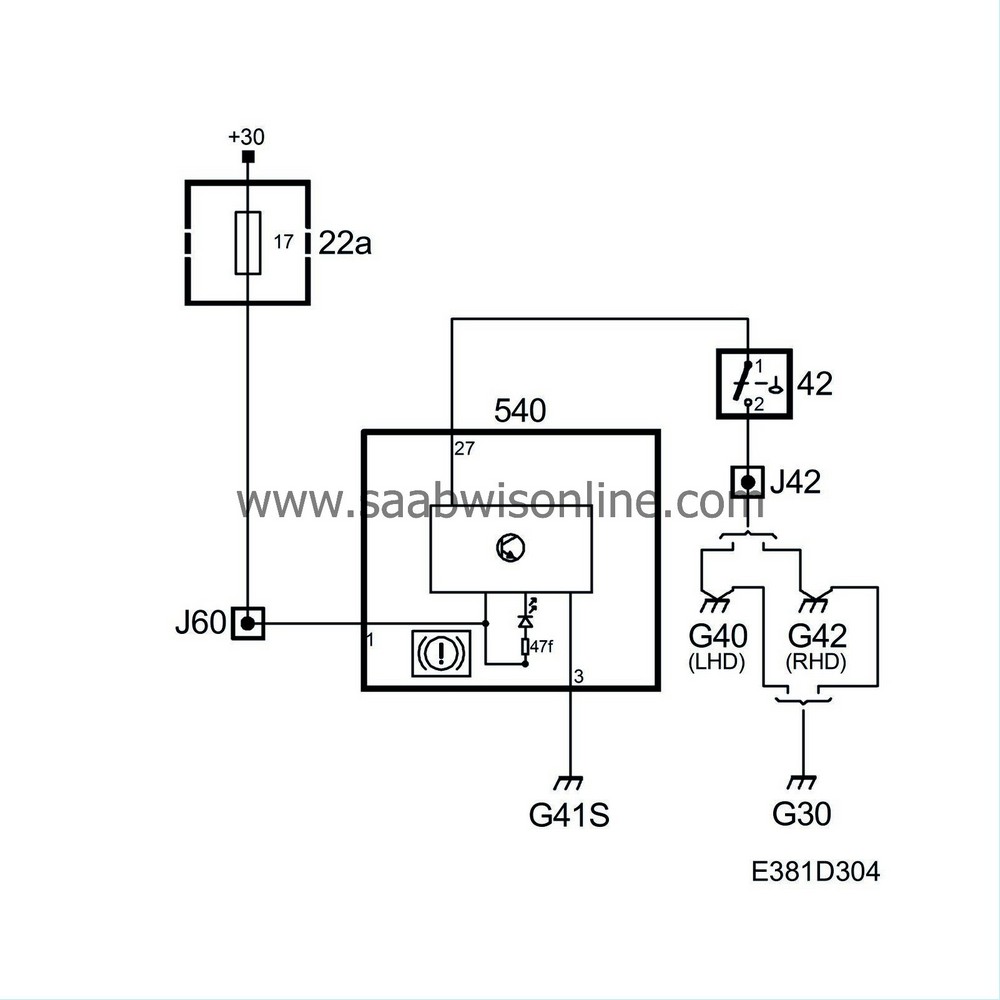
The brake fluid warning lamp warns the driver if the level of fluid in the reservoir is too low. The lamp will also go on if there is a fault in the ABS system.
If the brake fluid level is too low the level sensor switch closes causing pin 27 in the main instrument unit to be grounded. The control module then switches on the lamp. At engine speeds exceeding 300 rpm the MIU sends a message to the SID control module requesting an acoustic signal.
The main instrument unit lights the brake fluid level warning lamp for 3 seconds when the ignition is turned on.
Diagnosis
The function has no diagnostics.| Warning lamp, handbrake |
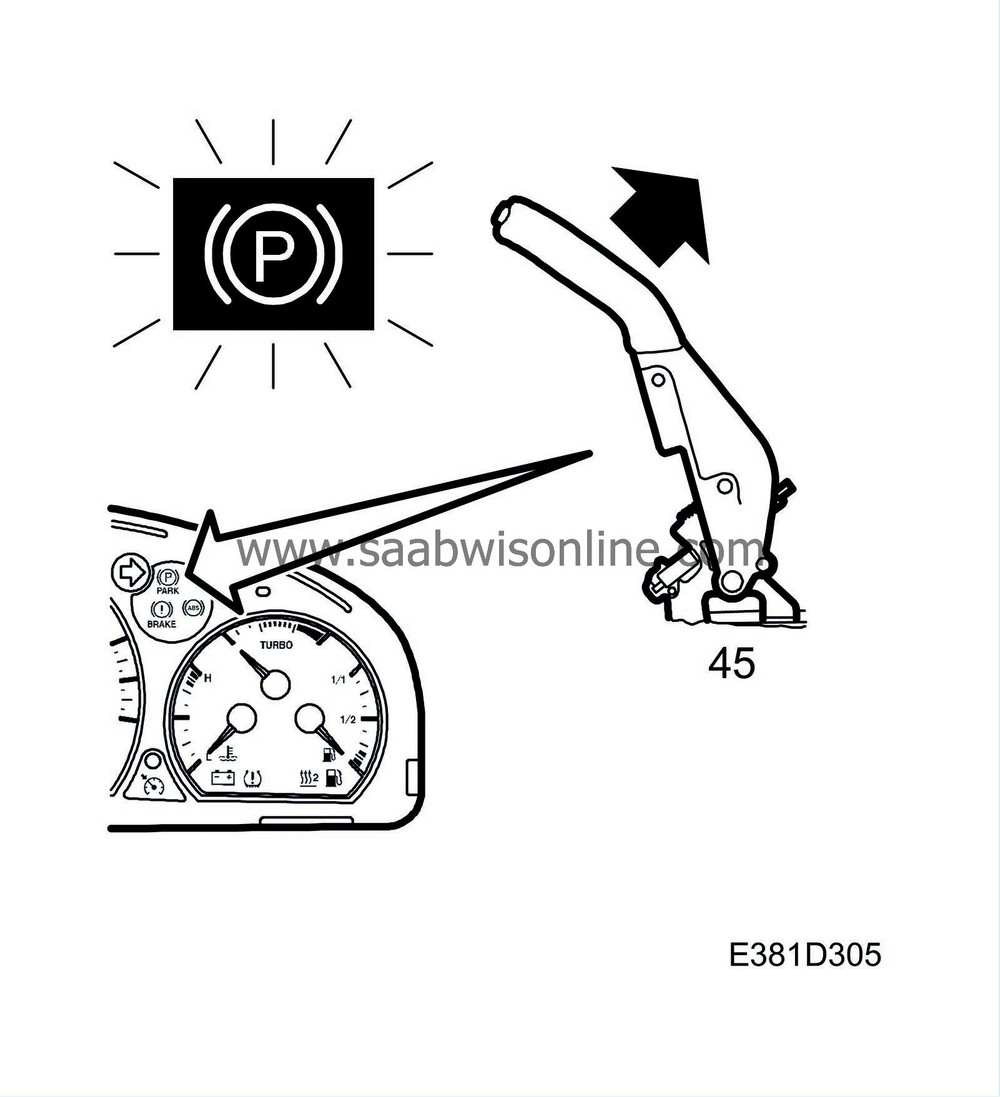
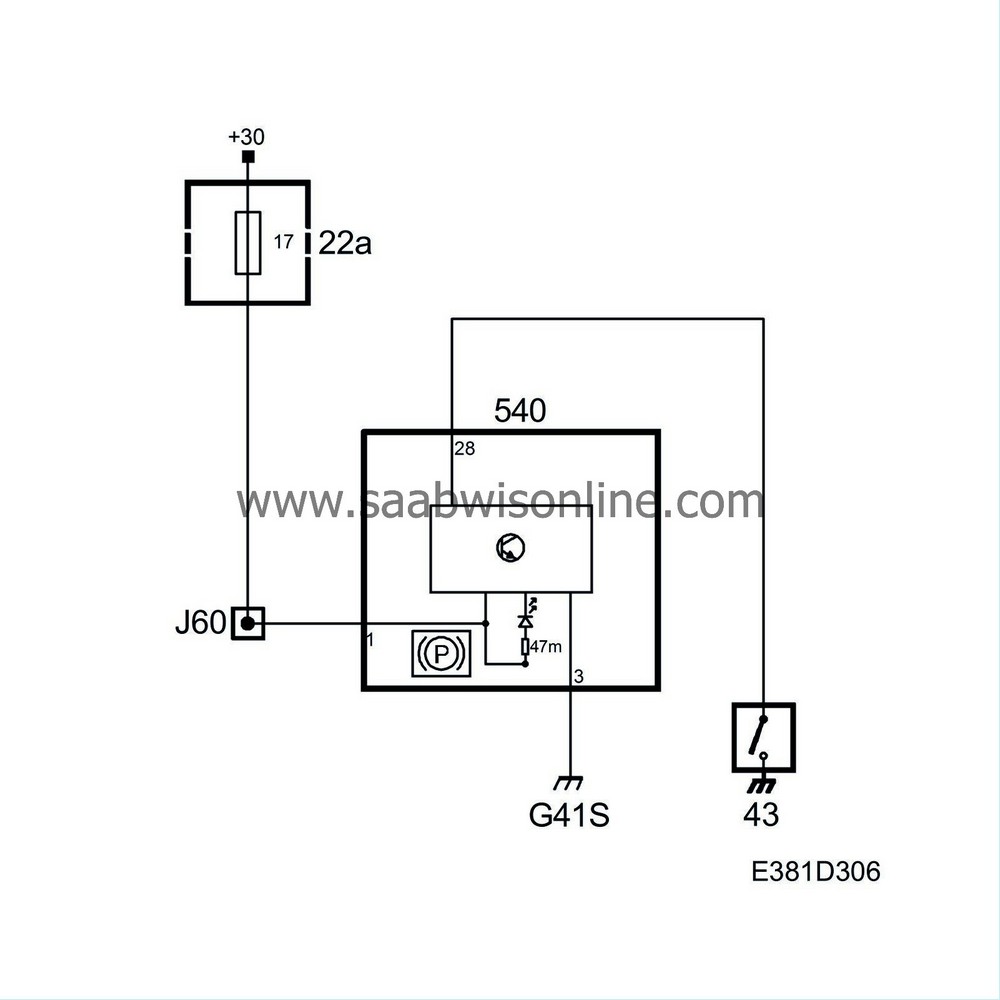
The handbrake warning lamp is situated on the RH side of the main instrument unit and informs the driver if the handbrake is applied.
When the handbrake is applied, pin 28 on the MIU is grounded by the switch on the handbrake lever, which causes the control module to turn on the lamp.
If the car speed exceeds 5 km/h from a speed less than 5 km/h with the handbrake applied, the MIU sends a message to the SID control module requesting an acoustic signal.
Diagnosis
The function has no diagnostics.| ESP indicator, information display |
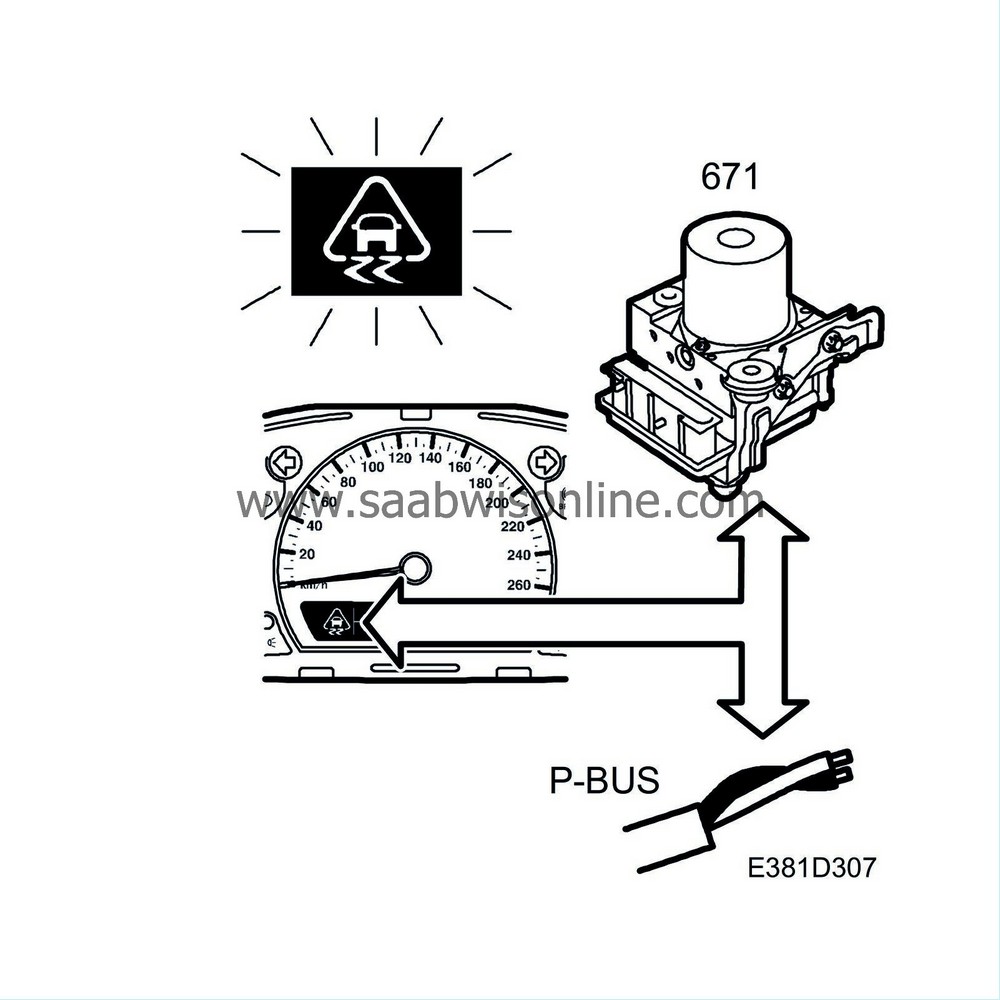
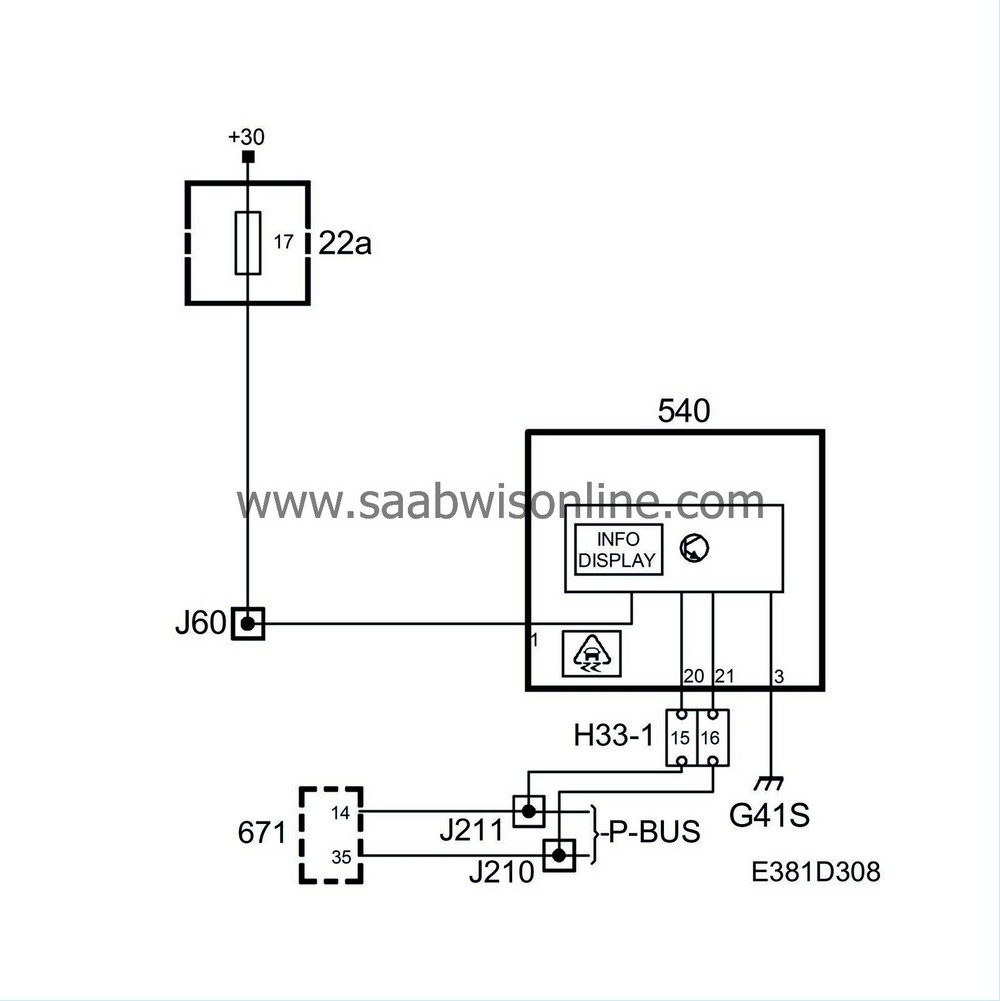
The ESP function indicator is shown on the information display when ESP regulation is active. If a fault arises in the ESP system, the ESP OFF indicator lamp is switched on via the P bus. The ESP symbol on the display is activated by the ESP control module which sends out information on the P bus.
The symbol is switched on during ESP regulation after a short time delay (300 ms) and is subsequently on so long as the system is operative, although not less than one second.
When turning on the ignition, the ESP OFF lamp is switched on for 3-5 seconds.
Diagnosis
The function has no diagnostics.| ESP OFF indicator lamp |
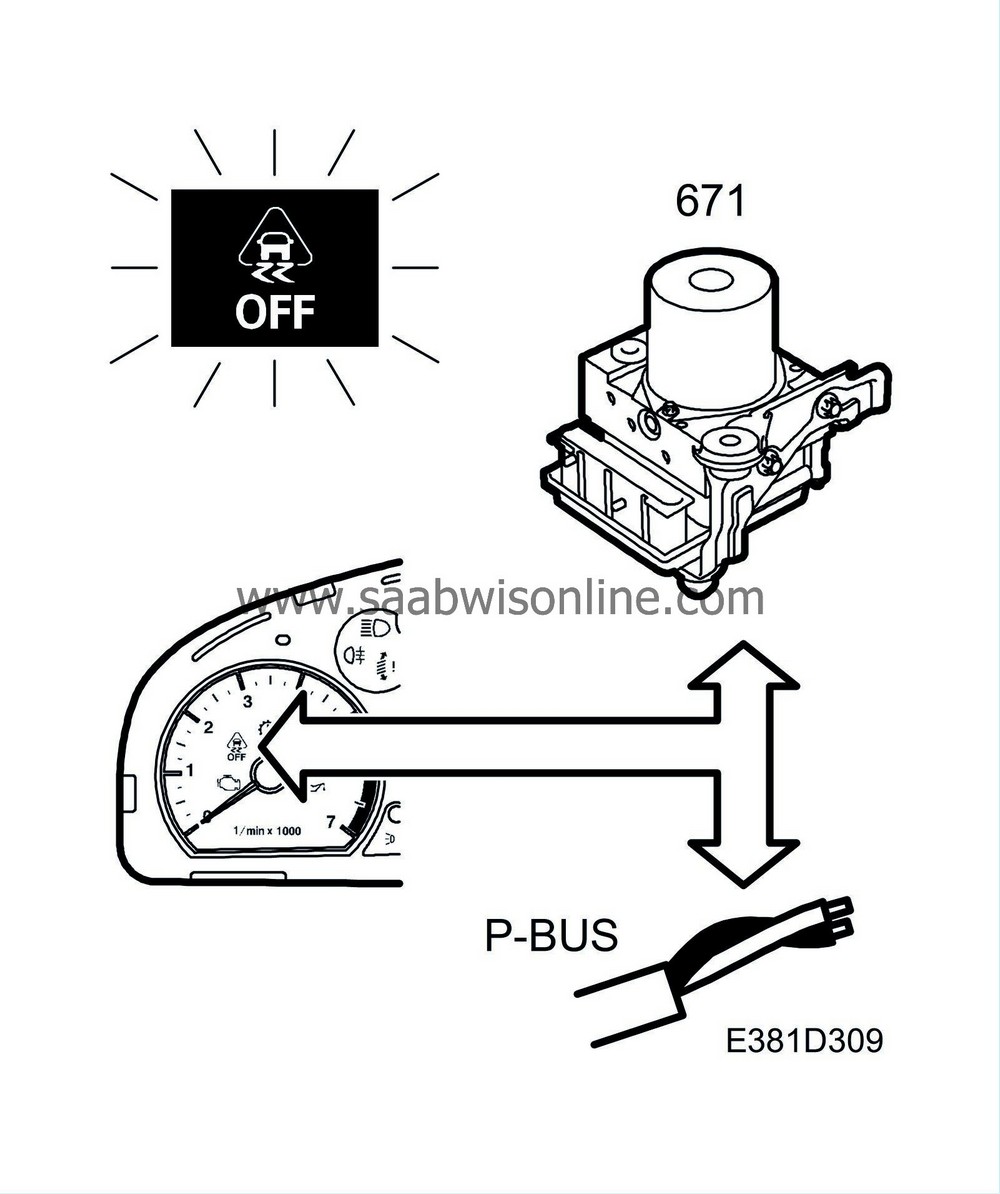
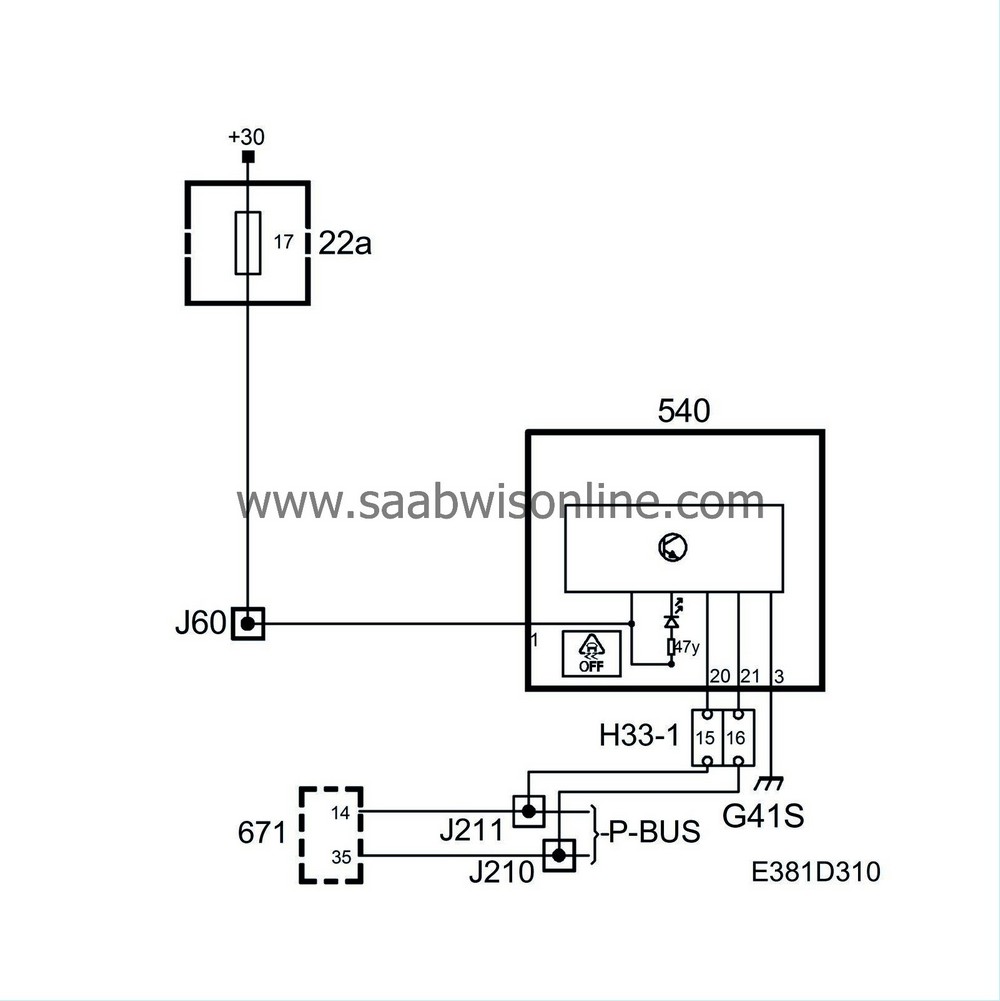
If a fault should occur in the ESP system, the ESP OFF indicator lamp will be turned on via the P-bus. The warning lamp also comes on when the system is disengaged manually, which can be done at speeds lower than 60 km/h (37.5 mph) by pressing the ESP switch. The system can be engaged by pressing in the ESP switch at an optional speed, whereby the ESP OFF indicator lamp will go out again.
When the ignition is turned on, the lamp comes on; if there is no fault, the lamp goes off again after 3-5 seconds.
Diagnosis
If there is a fault in a system which affects the ABS function then the ABS, ESP OFF and foot brake warning lamps will light up.If there is no bus message from the ESP control module for 2 seconds, the ESP OFF and ABS lamps will light up. If there is no bus message for a further 8 seconds, the foot brake fault warning lamp will also come on.
| ABS warning lamp |
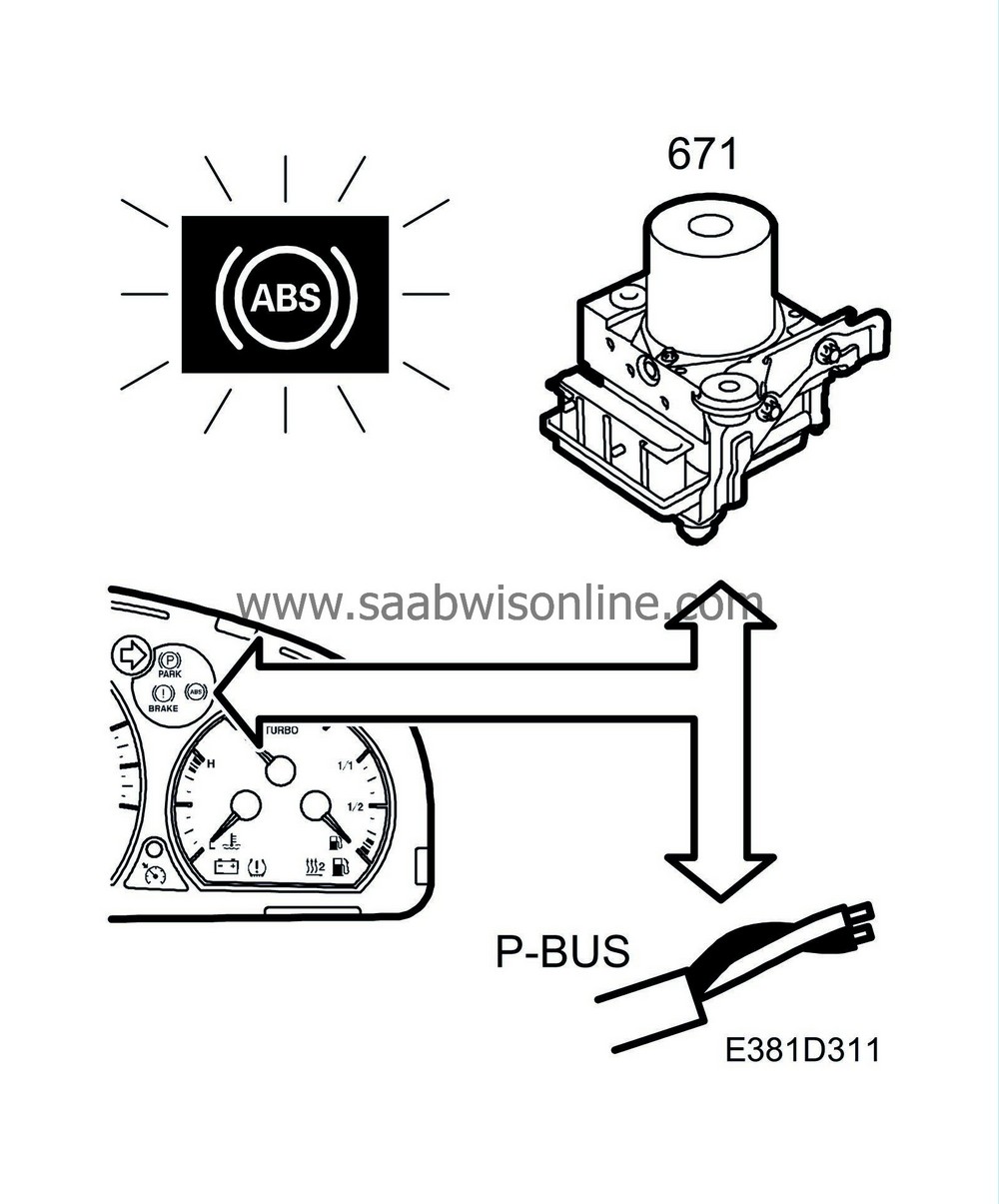
The ESP control module monitors the operation of the ABS system and turns on the ABS warning lamp on the upper right-hand side of the main instrument unit if a fault occurs.
When the ABS lamp lights up, the anti-lock braking system is disabled and the brakes work just like a conventional braking system.
The main instrument unit receives information on the bus to turn on/off the lamp.
The ESP control module lights the lamp when the ignition is turned on. If there are no faults, the lamp will go out after 3 seconds.
When the ABS warning lamp lights up the ESP OFF lamp will also be illuminated and at engine speeds exceeding 300 rpm the MIU sends a message to the SID control module requesting an acoustic signal.
Diagnosis
The function has no diagnostics.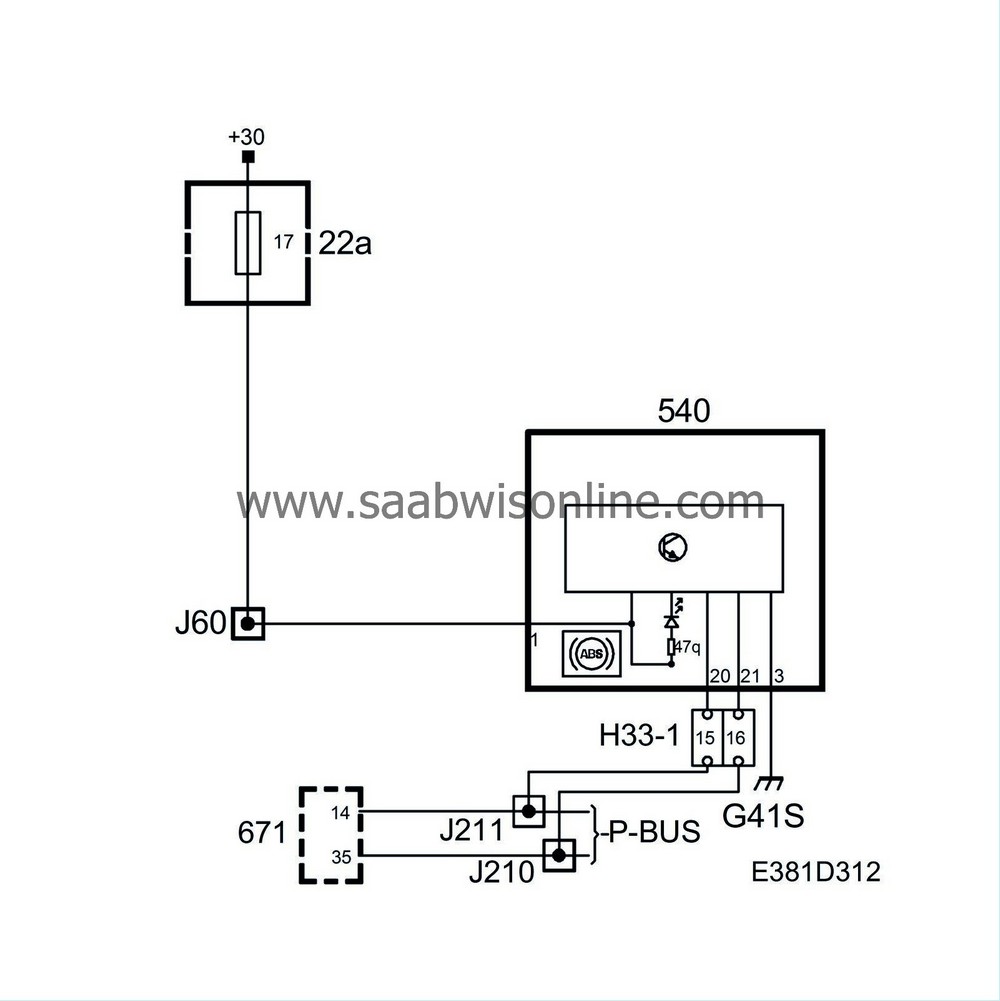
| SPORT indicator, information display |
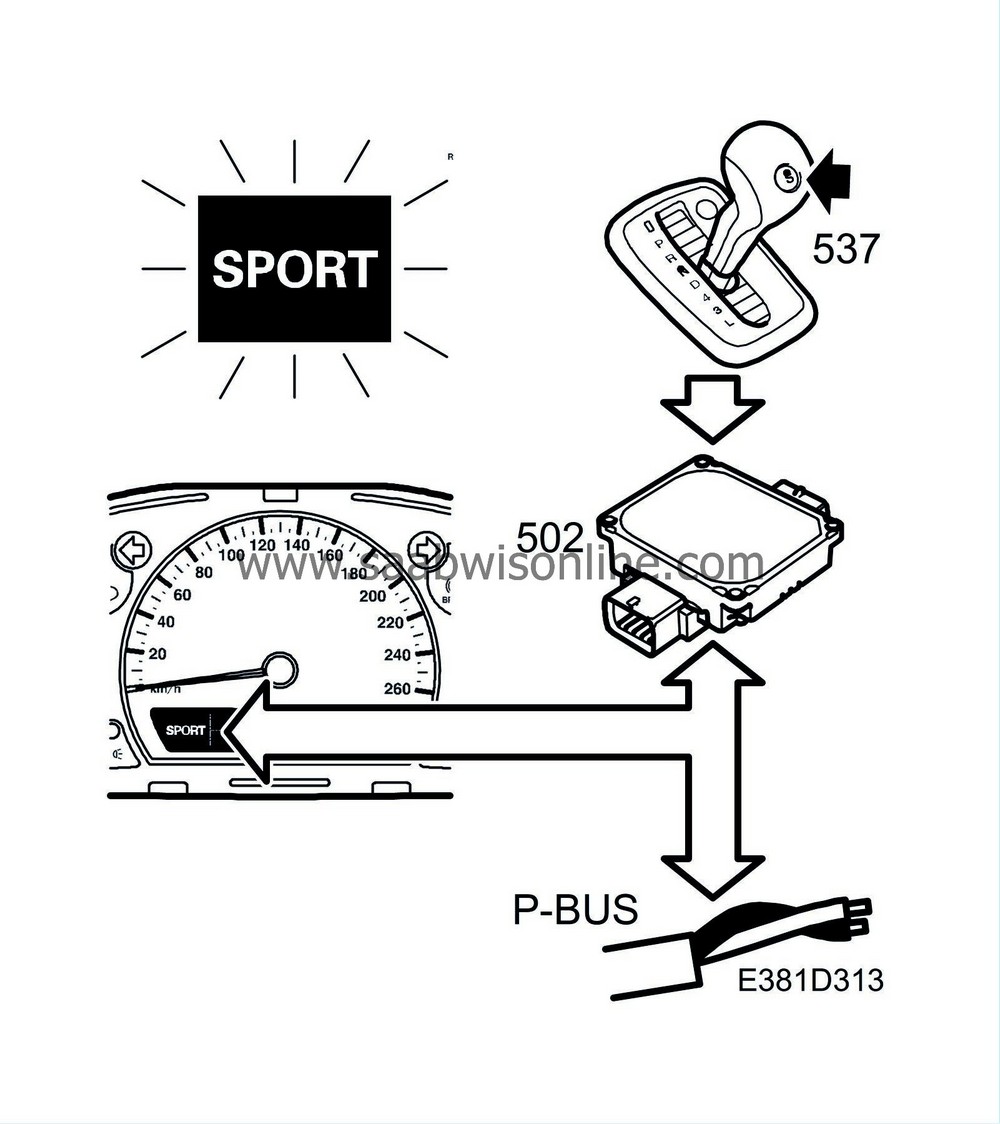
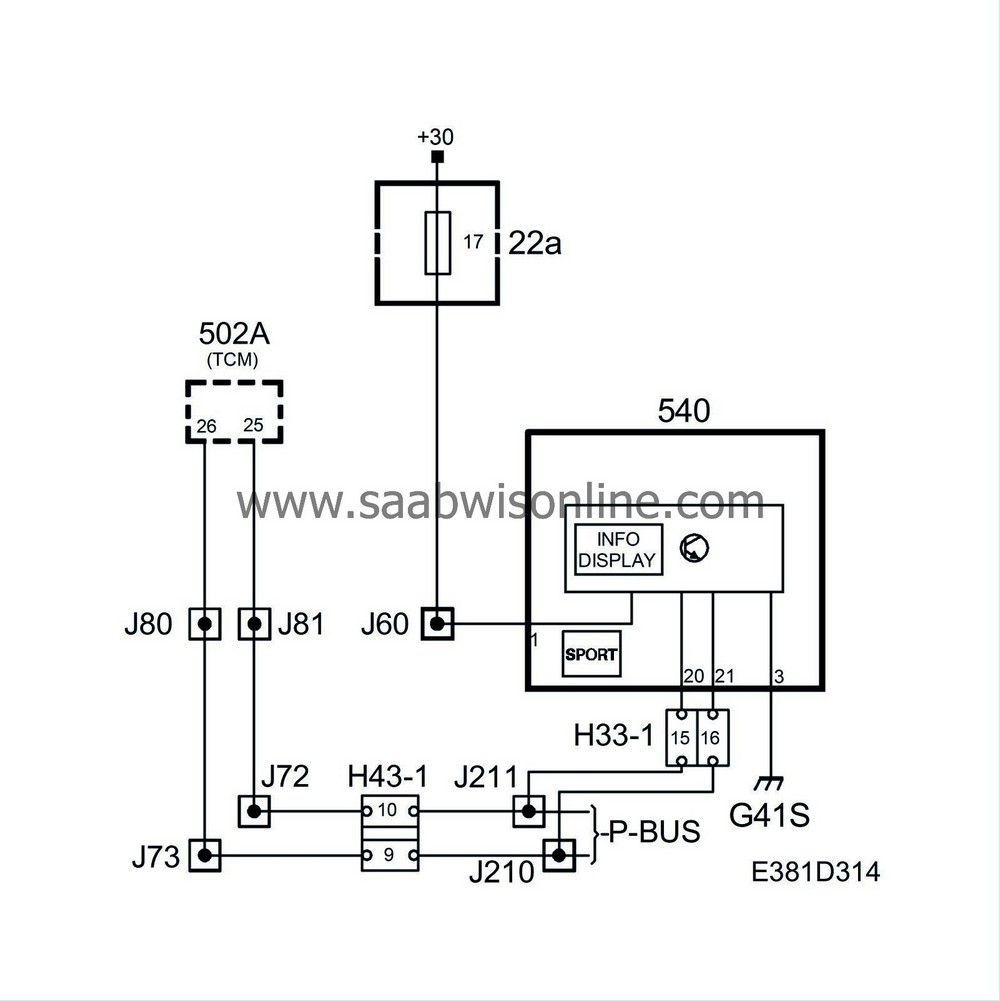
On cars equipped with automatic transmission the indicator lights up when the SPORT button on the gear selector lever is depressed. The sport function can be selected when the gear selector lever is in either the D or N position.
In the SPORT mode, the transmission remains longer in each gear. The TCM continuously sends the bus information: SPORT, unit ON/OFF.
The indicator on the information display is switched off under the following conditions:
| • |
When the sport button is depressed again.
|
|
| • |
When the transmission is in Limp-home mode.
|
|
| • |
When Winter mode is selected.
|
|
| • |
If the ignition is turned off and then on again.
|
|
| • |
The selector lever is moved to P or R.
|
|
Diagnosis
The function has no diagnostics.| CHECK GEARBOX indicator lamp |
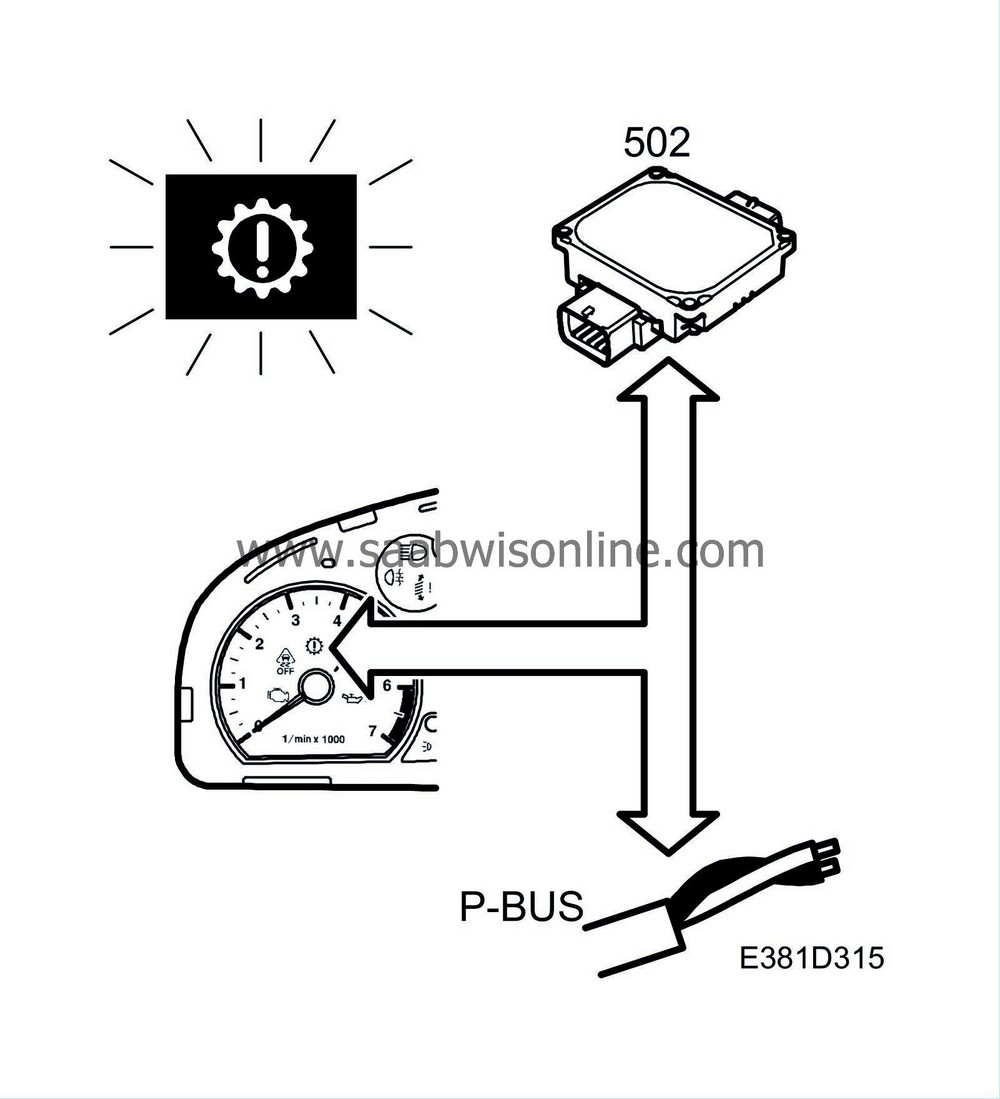
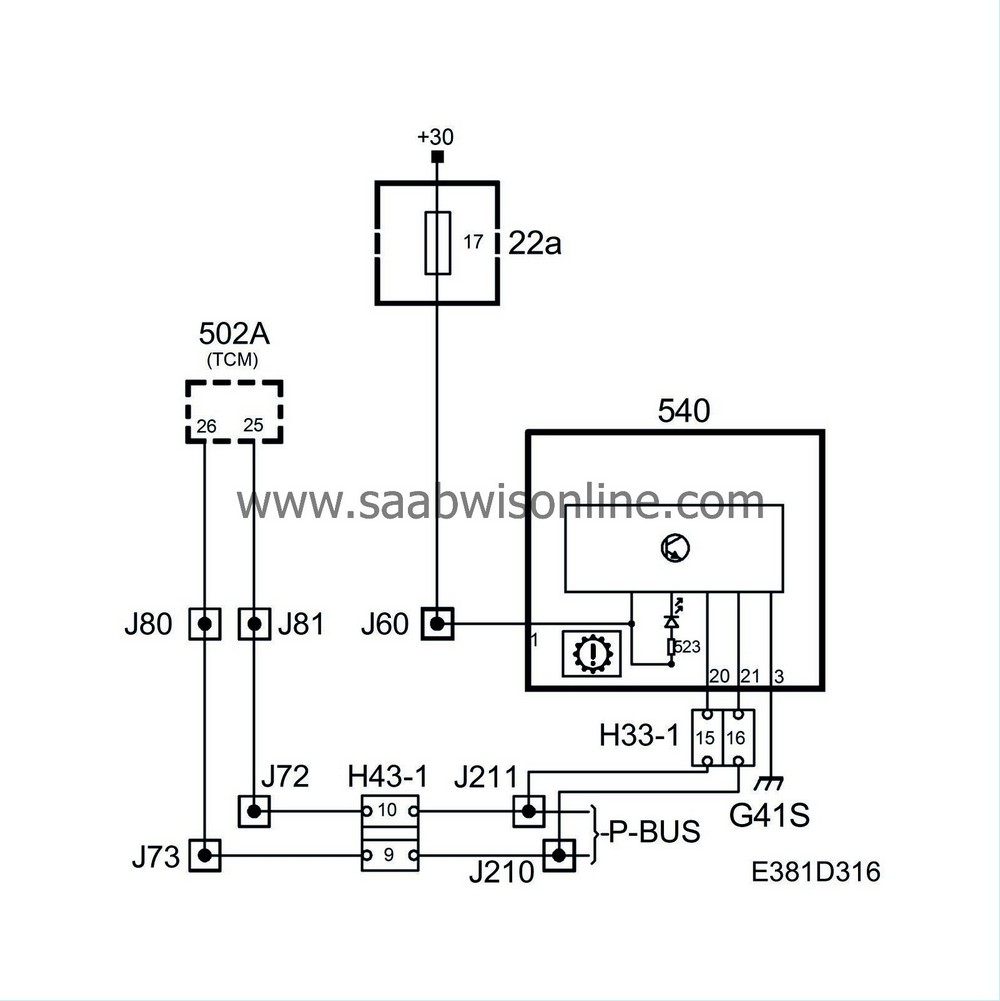
If there is a fault in the automatic transmission or its control module, the TCM lights the CHECK GEARBOX warning lamp in the main instrument unit.
The lamp is powered from the main instrument unit and grounded internally by the main instrument unit. TCM continuously sends bus information CHECK GEARBOX, unit ON/OFF.
On receiving CHECK GEARBOX ON, the control module grounds the output of the lamp which then lights up.
When the TCM sends the message CHECK GEARBOX OFF, the lamp goes out.
When the ignition is turned on, the TCM lights the lamp for approx. 3 seconds and if there is no fault the lamp will go out.
Diagnosis
The function has its own diagnostics in the sending system.| Fuel reserve indicator lamp |
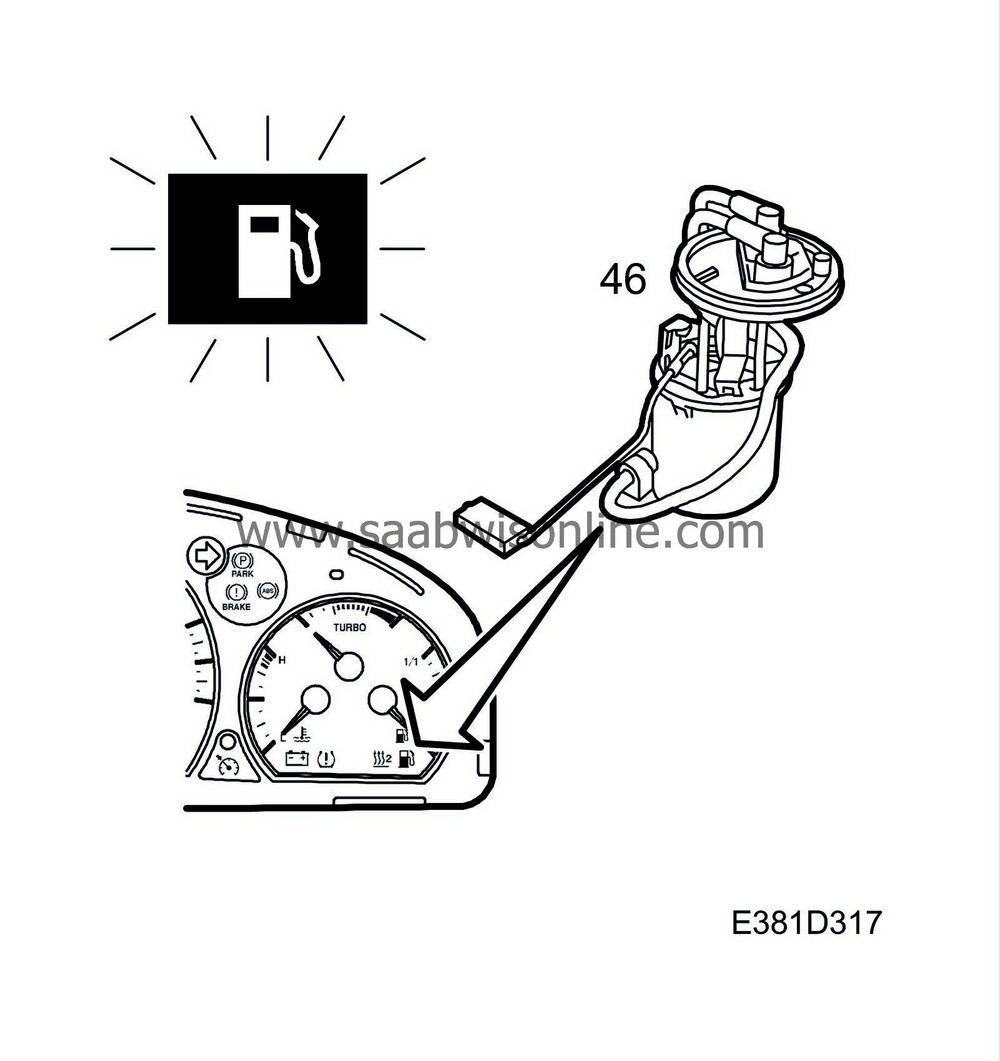
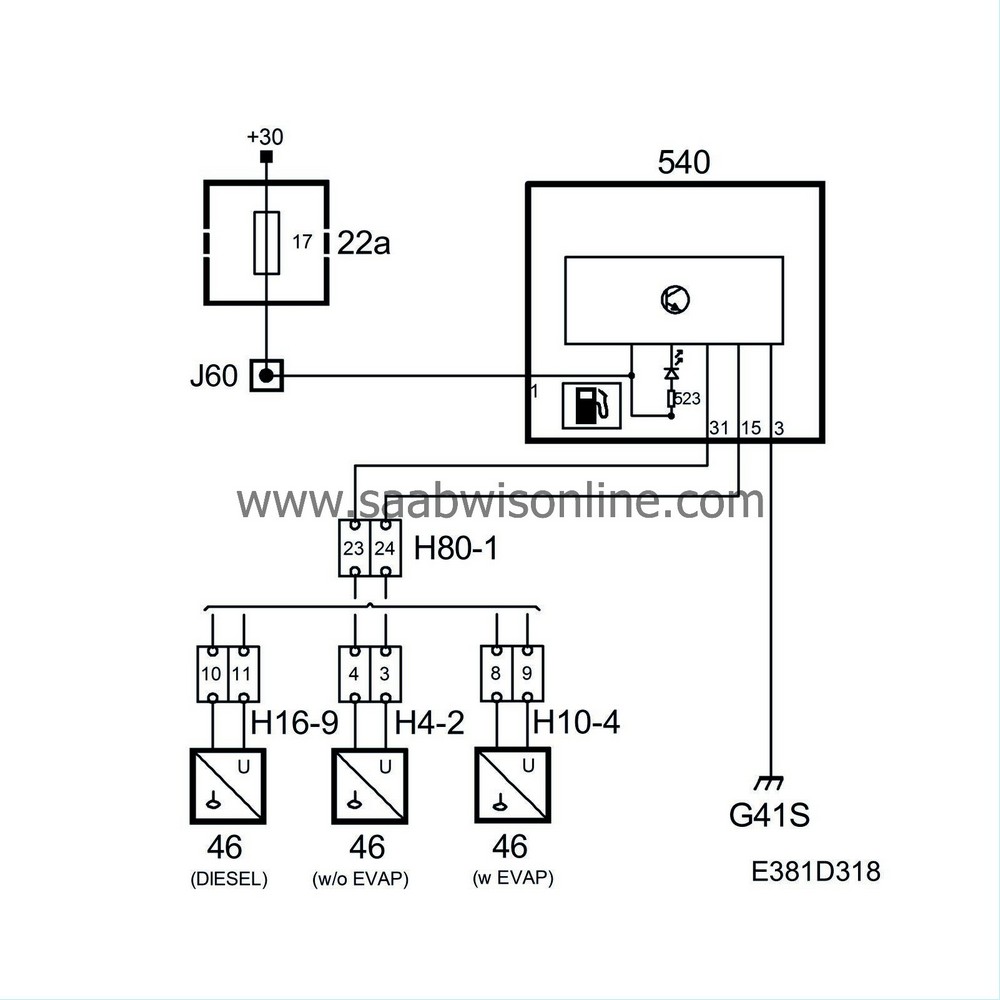
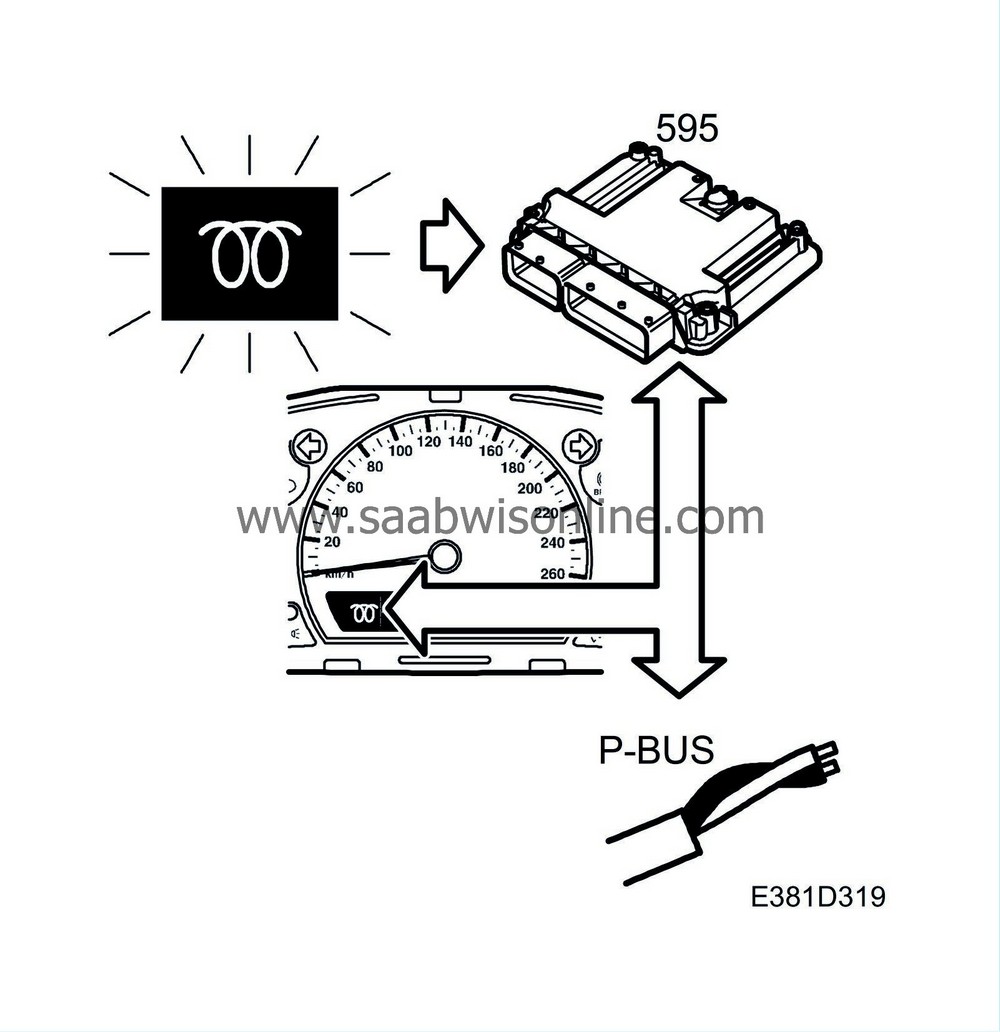
When approx. 10 litres of fuel are left, the lamp comes on to indicate the low fuel level. The lamp is powered from the main instrument unit and grounded internally by the main instrument unit.
The main instrument unit lights this lamp for three seconds when the ignition is switched on.
Diagnosis
An open circuit/short circuit sets diagnostic trouble code B1720. The gauge needle indicates 0 litres and the fuel reserve indicator lamp lights up.| Glow plug indicator lamp |
The glow plug indicator lamp comes on during preheating.
The lamp is powered from the main instrument unit and grounded internally by the main instrument unit. The diesel engine control module continuously sends the bus information Glow Plug, unit ON/OFF.
On Glow Plug ON, the control module grounds the output for the lamp which is then lit.
Diagnosis
The function has diagnostics in the sending system.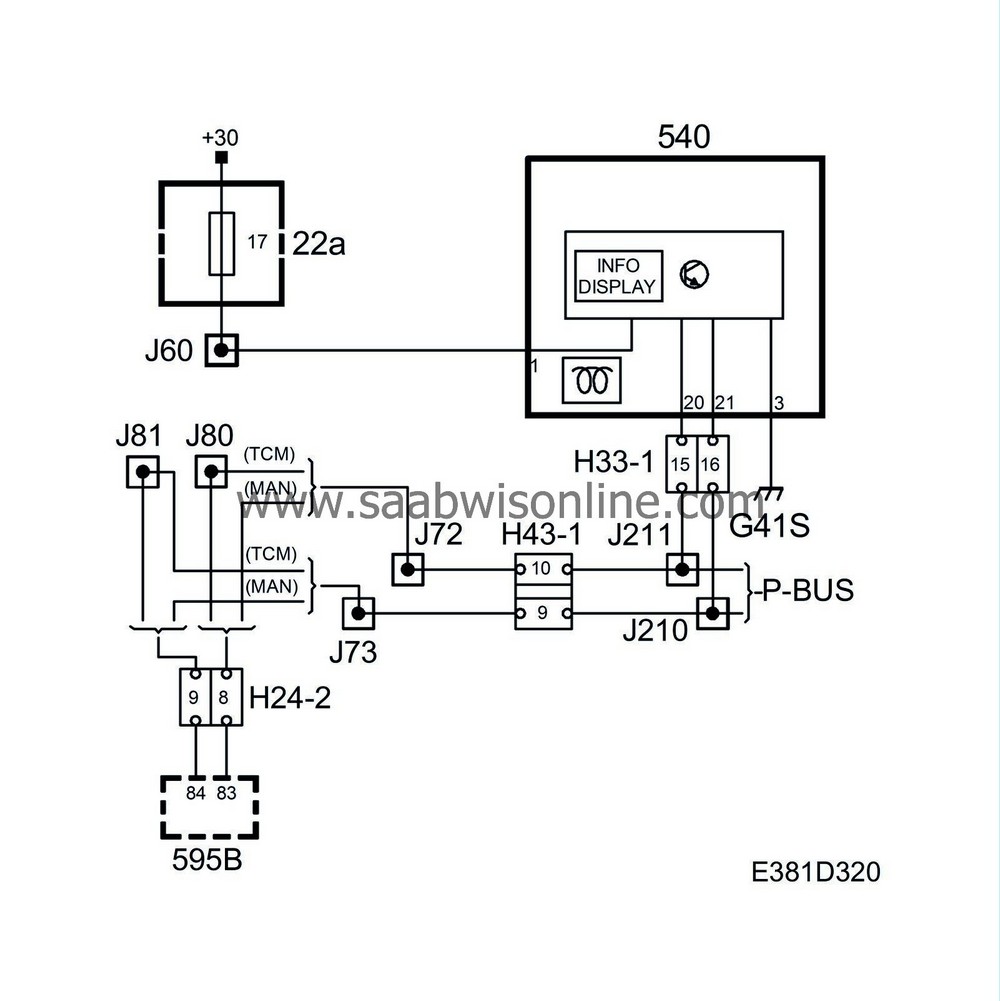
| CHECK ENGINE indicator lamp |
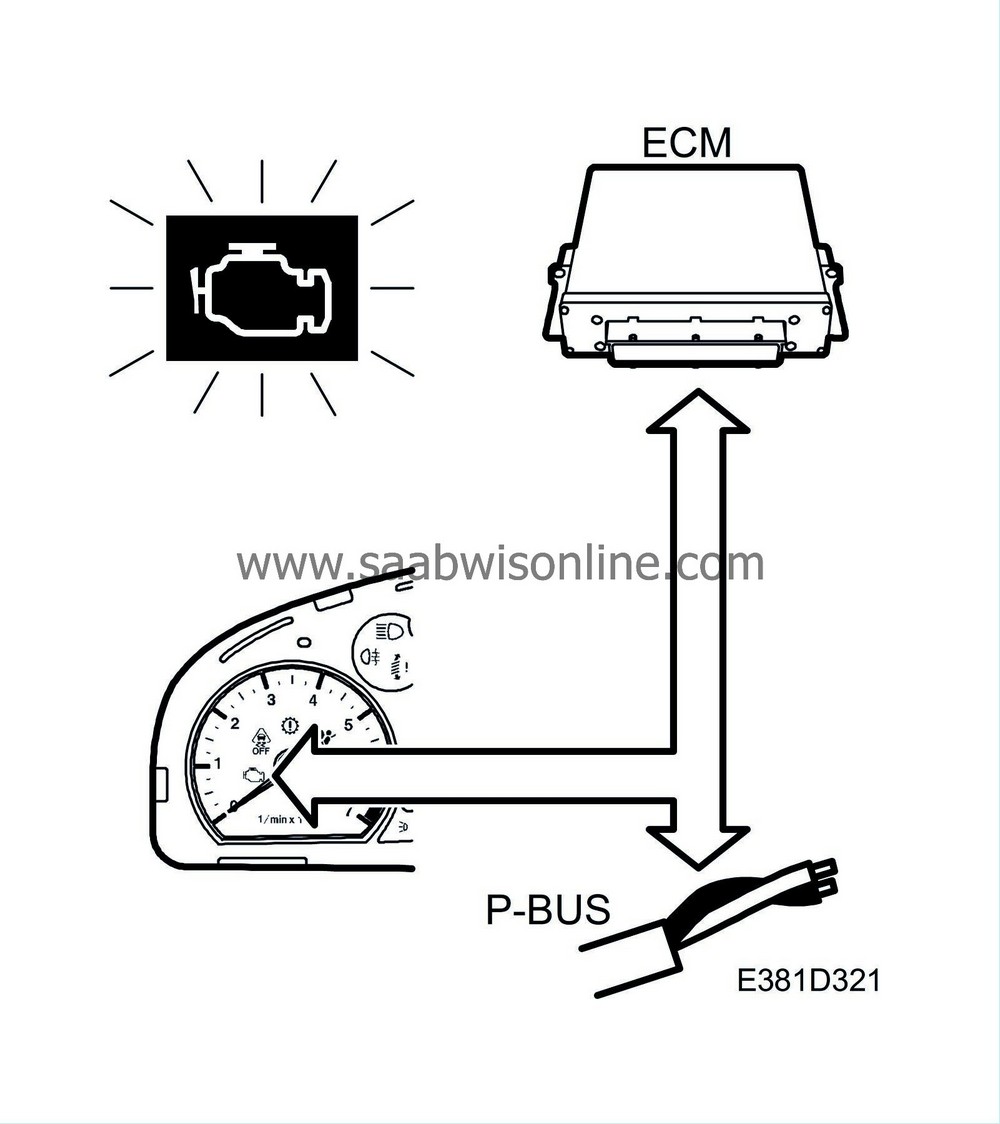
The CHECK ENGINE lamp (MIL) warns the driver when a fault occurs in the engine management system.
The lamp is powered from the main instrument unit and grounded internally by the main instrument unit. The engine control module continuously sends the bus information CHECK ENGINE, unit ON/OFF.
On receiving CHECK ENGINE ON, the control module grounds the output of the lamp which then lights up.
In certain markets, the TCM (transmission control module) lights the CHECK ENGINE lamp.
If the engine control module changes status on the message to CHECK ENGINE OFF, the light goes out.
On ignition ON, the lamp comes on until the engine starts; if there is no fault, the engine control module sends the bus information CHECK ENGINE OFF and the lamp goes out.
Diagnosis
The function has its own diagnostics in the sending system.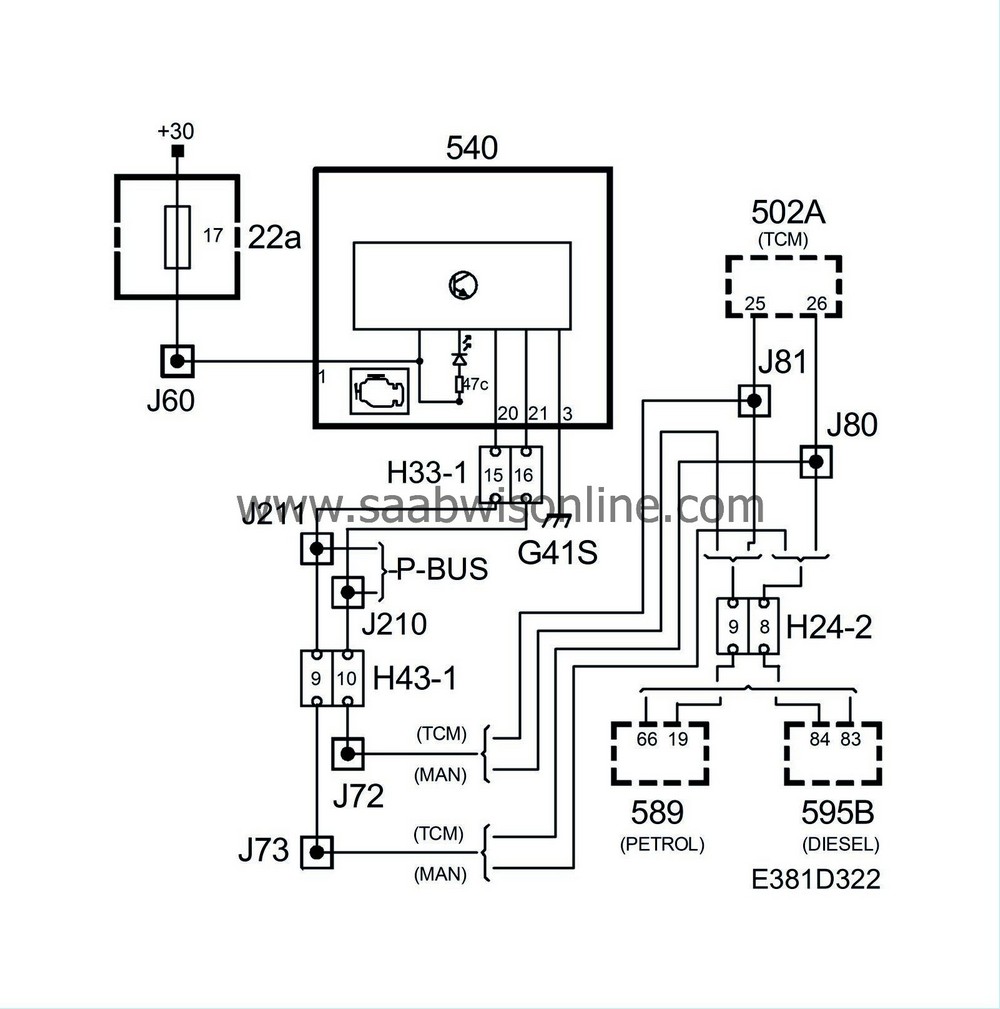
| Direction indicator repeater lamps RH and LH |
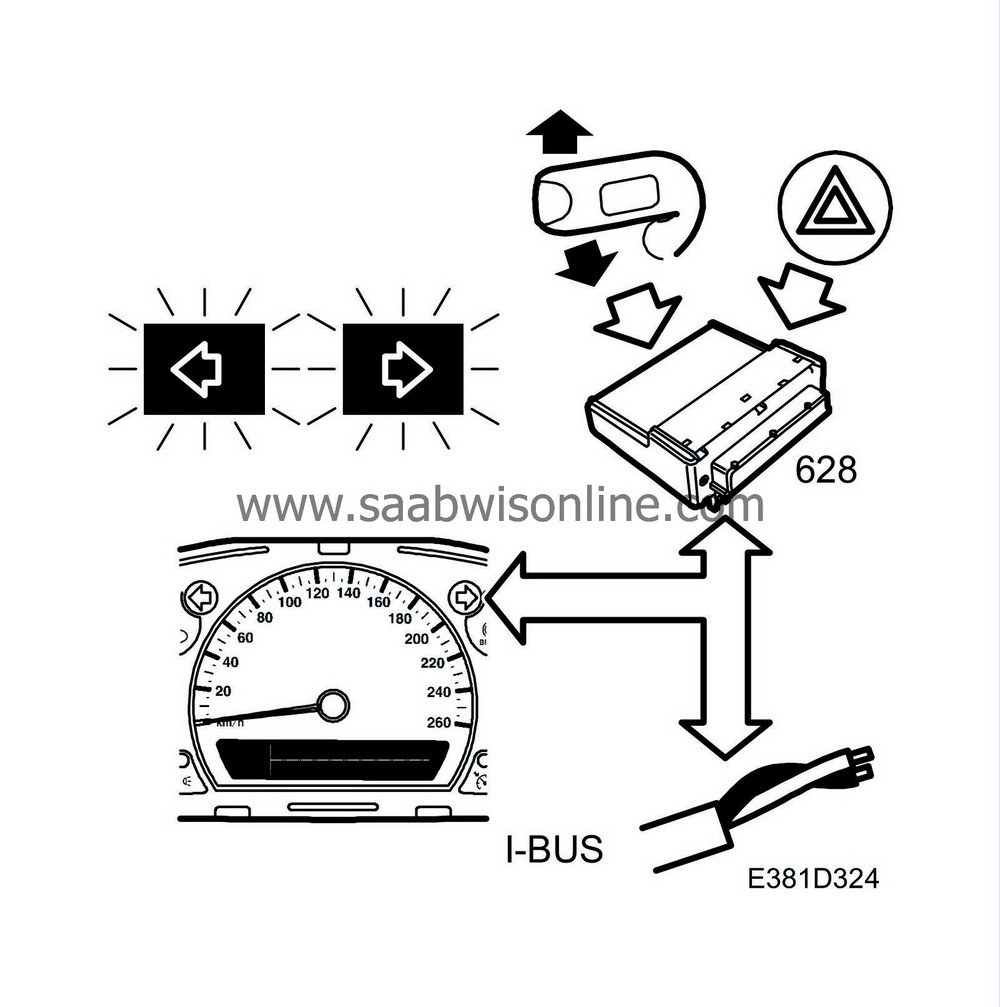
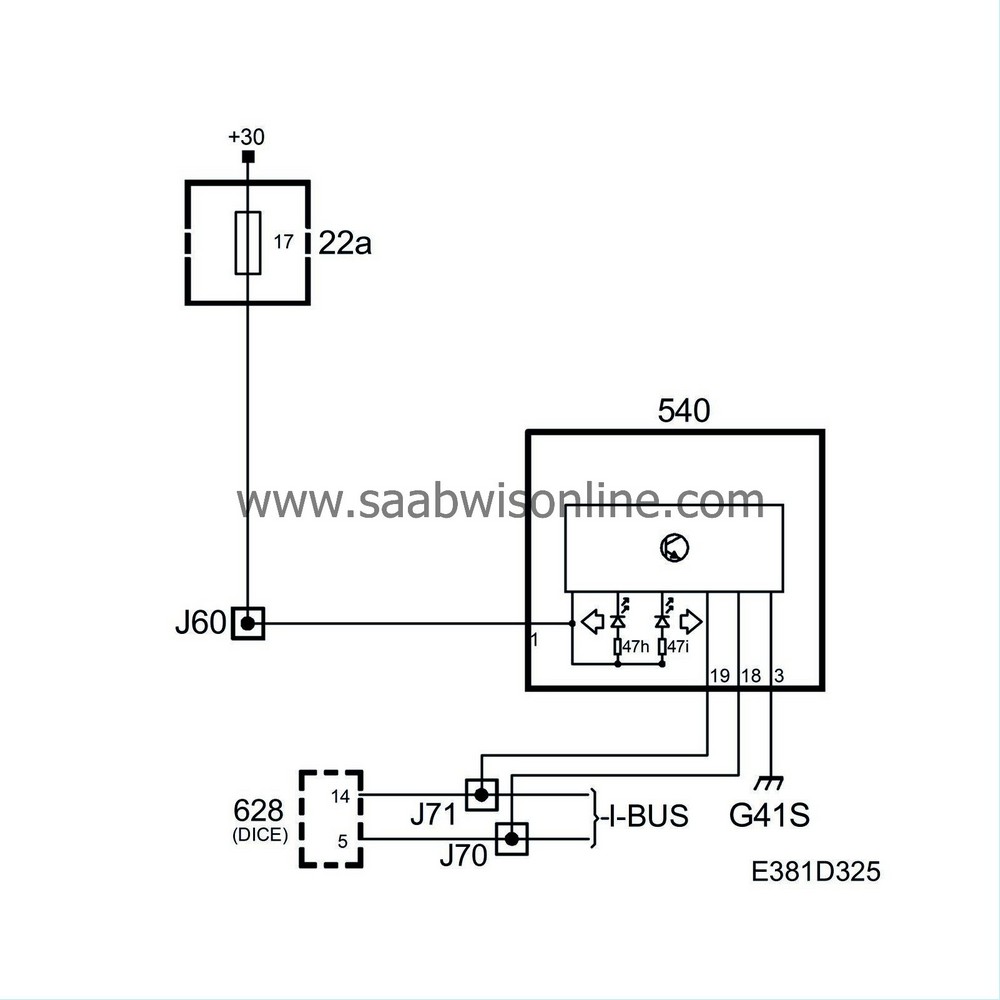
The repeater lamps are situated in the upper part of the main instrument unit and show when the direction indicators are on.
The lamps are powered from the main instrument unit and grounded internally by the main instrument unit. DICE continuously sends bus information status for INDICATORS RIGHT and INDICATORS LEFT, unit ON/OFF.
On receiving DIRECTION INDICATORS ON, the control module grounds the output of the lamp in question which then lights up.
| Example |
If the LH direction indicators are activated, DICE will change the status of the information DIRECTION INDICATORS LEFT ON/OFF at the same time as the direction indicator lamps are lit. In this way, the main instrument unit control module can synchronise the flashing of the repeater lamps with the direction indicator lamps.
The SID control module also activates the TIC/TAC sound at the same time as the lamps flash.
The function is the same for the RH direction indicators.
| Hazard warning lights |
The function for the hazard flashers is the same as for the direction indicators LH/RH except that both lamps are activated at the same time.
When the hazard flashers are activated and the ignition is OFF, the indicator lamps will not flash.
Diagnosis
The function has no diagnostics.| Cruise indicator lamp |
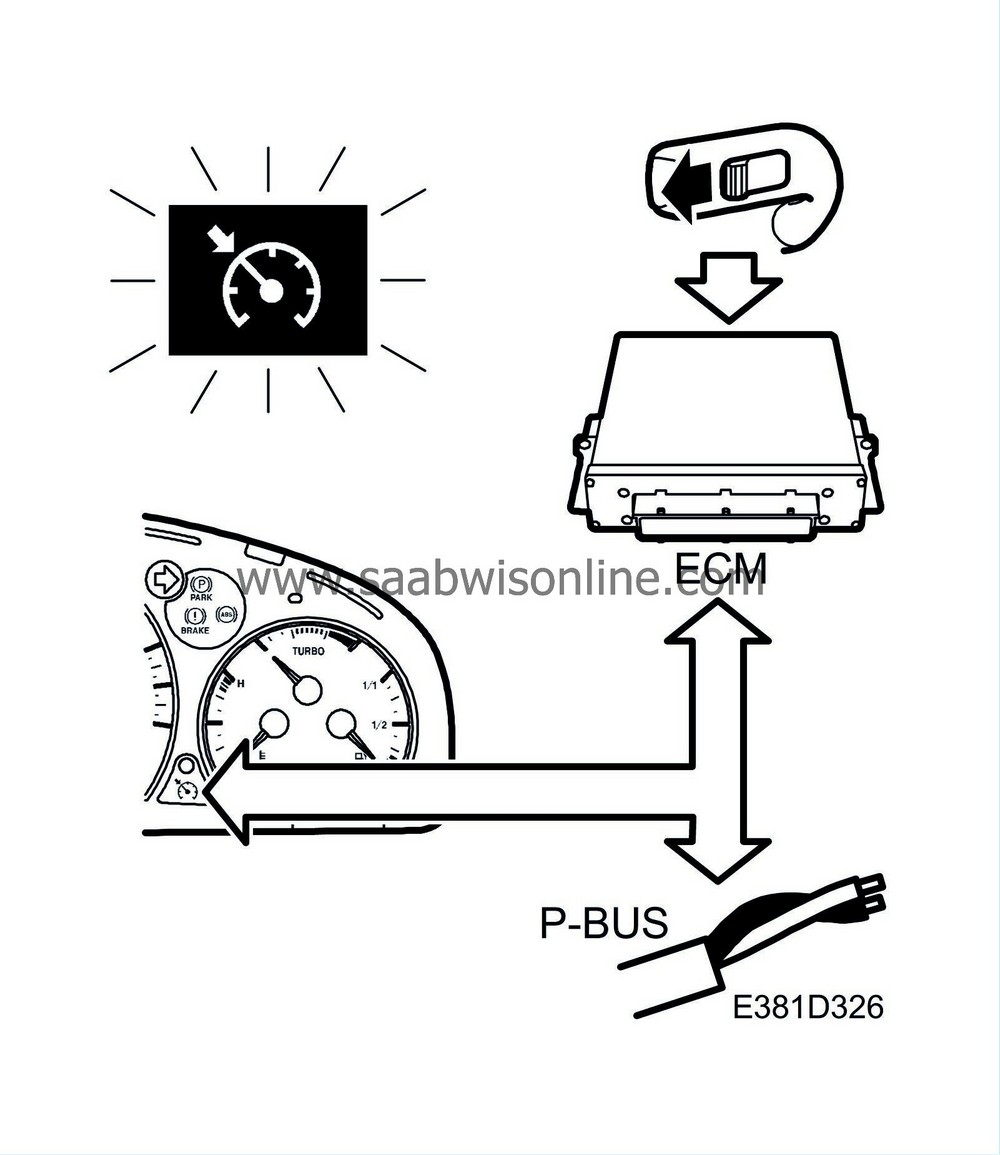
The main instrument unit incorporates a CRUISE indicator lamp that lights up when Cruise Control is engaged.
The lamp is powered from the main instrument unit and grounded internally by the main instrument unit. The engine control module continuously sends bus information CRUISE lamp, unit ON/OFF.
On receiving CRUISE Lamp ON, the control module grounds the output of the lamp which then lights up.
If the cruise control is disconnected, the engine control module changes the status on information to CRUISE Lamp OFF and the lamp goes out.
Diagnosis
The function has its own diagnostics in the sending system.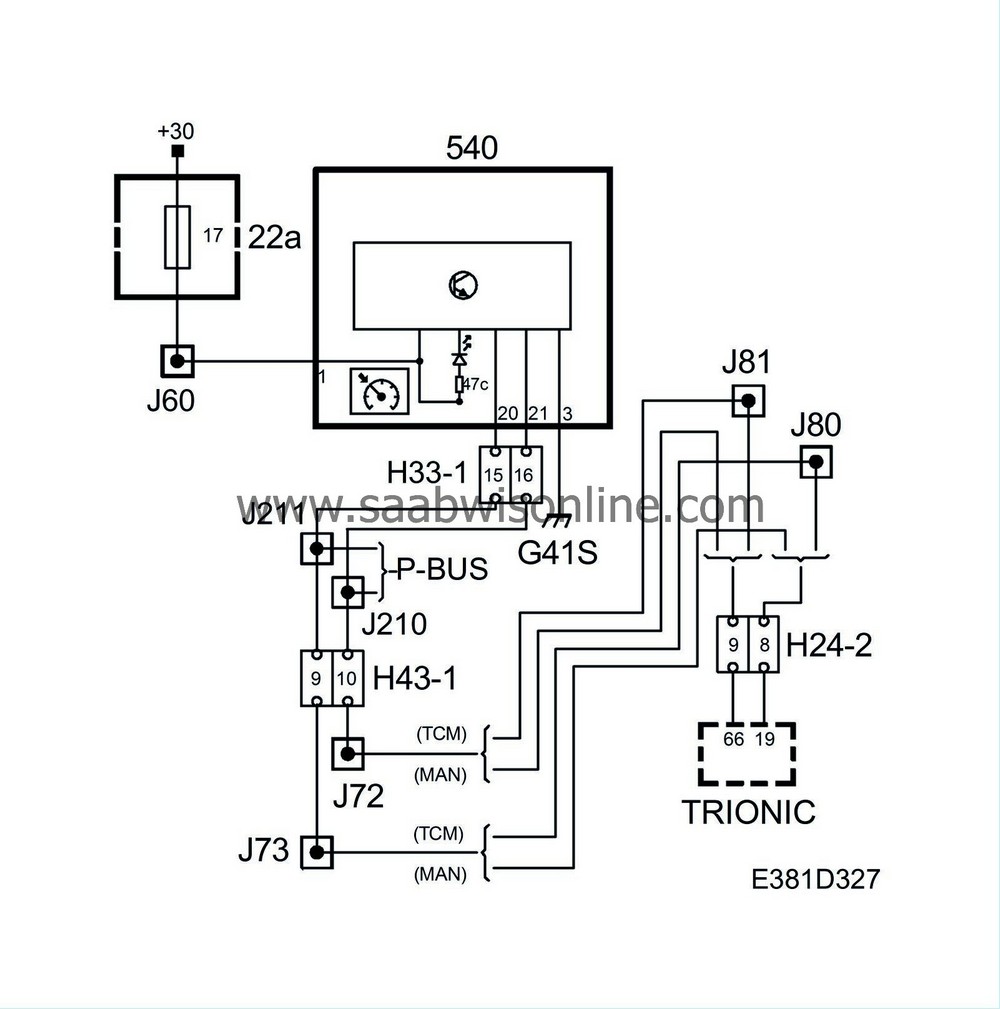
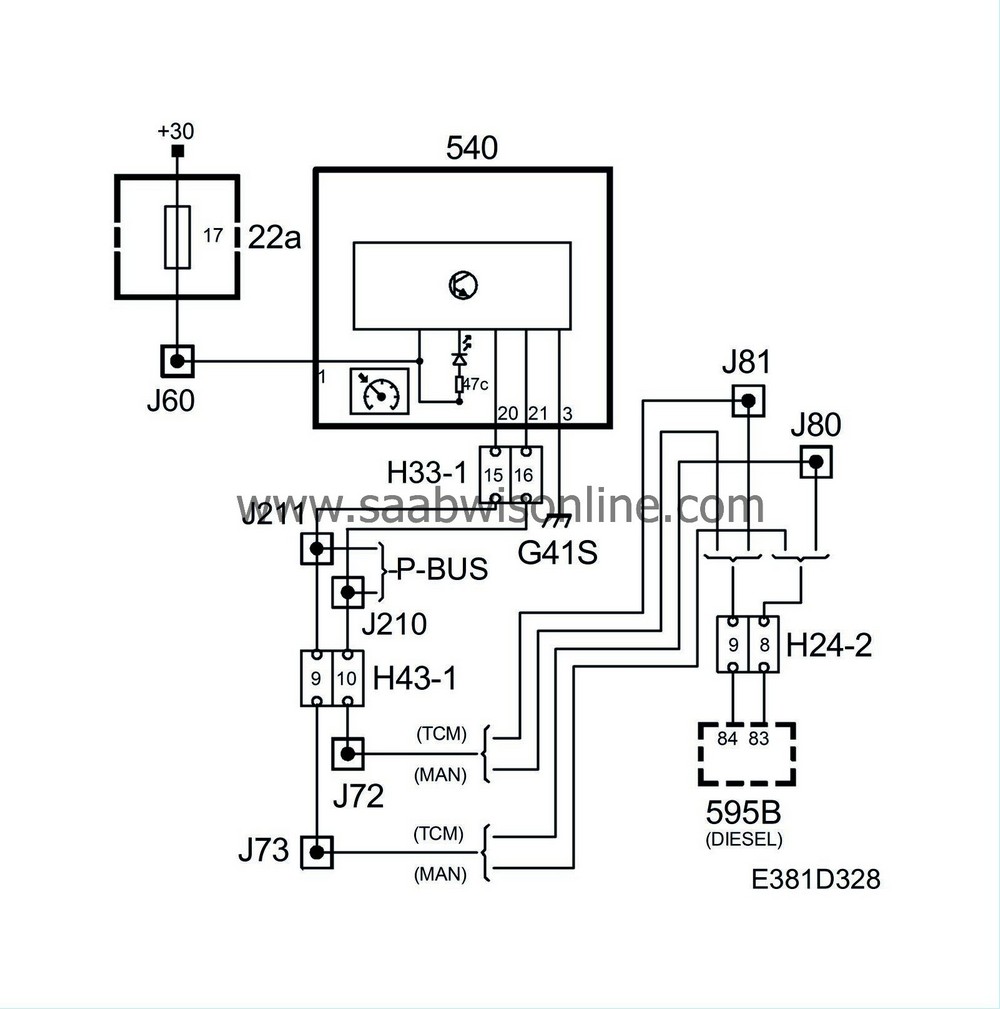
| SHIFT-UP indicator lamp, information display |
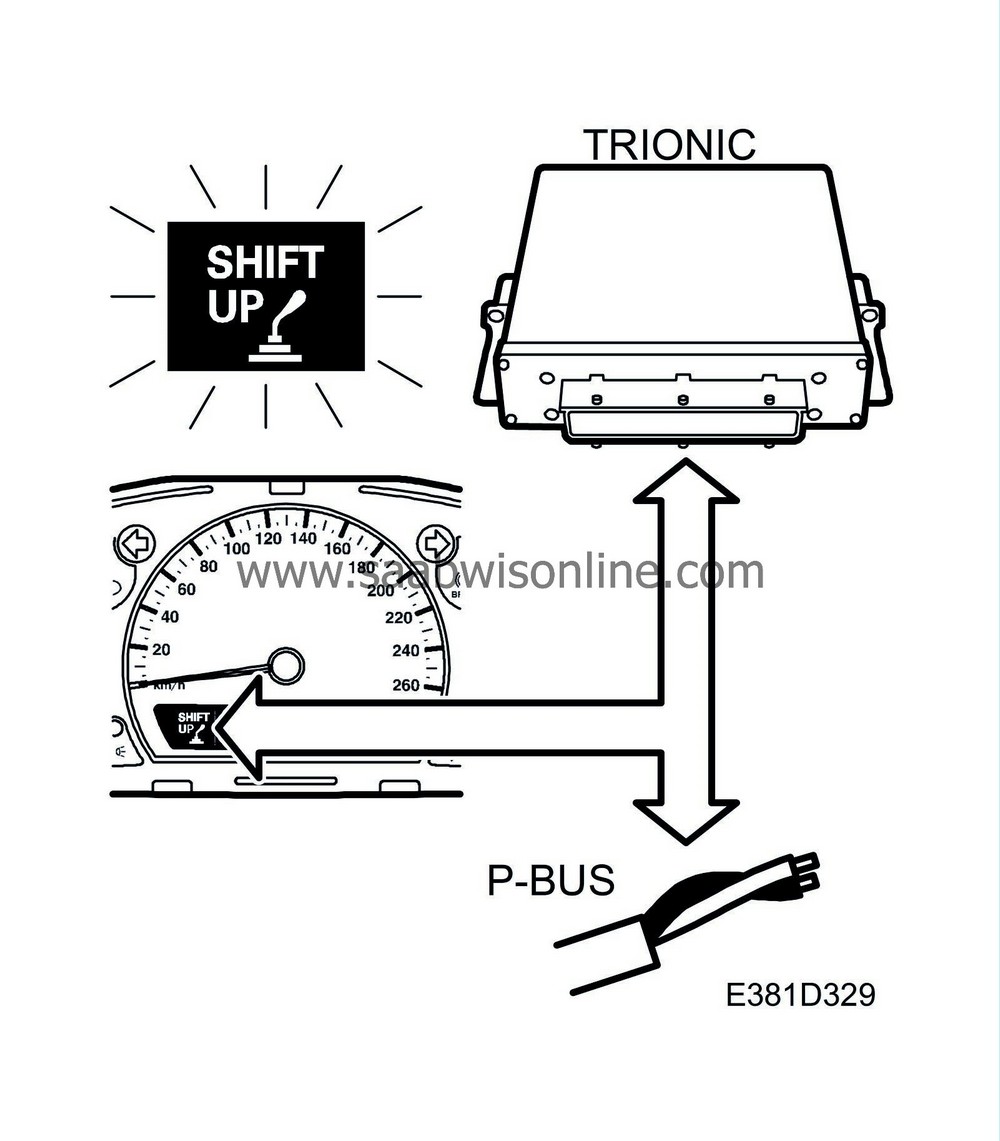
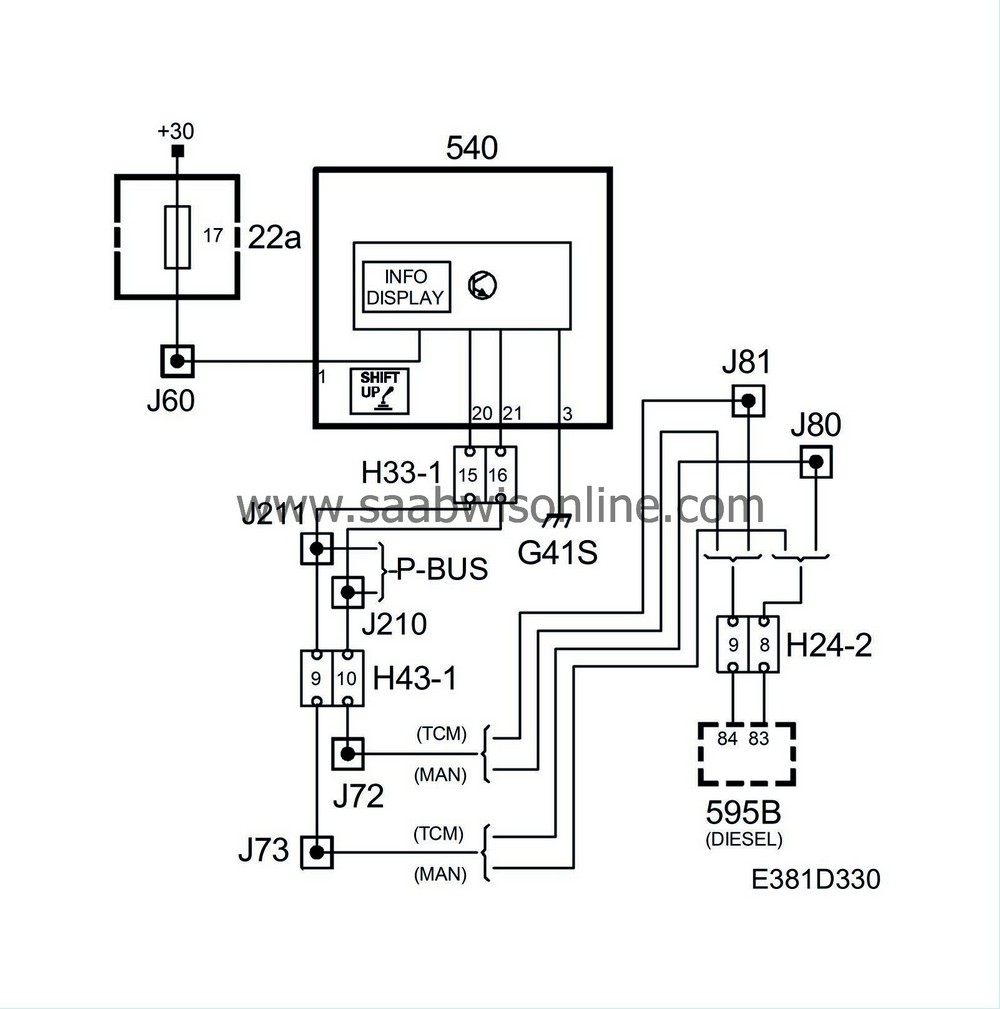
To achieve low fuel consumption, the SHIFT-UP indicator on the main instrument unit display lights up when a higher gear should be engaged.
The engine control module continuously sends the bus information SHIFT-UP, unit ON/OFF
When SHIFT-UP ON is sent, the SHIFT-UP lamp on the main instrument unit display lights up.
When the shift has been made, the engine control module changes the status of the information to SHIFT-UP OFF and the indicator lamp goes out.
Diagnosis
The function has its own diagnostics in the sending system.| Lights-on indicator lamp |
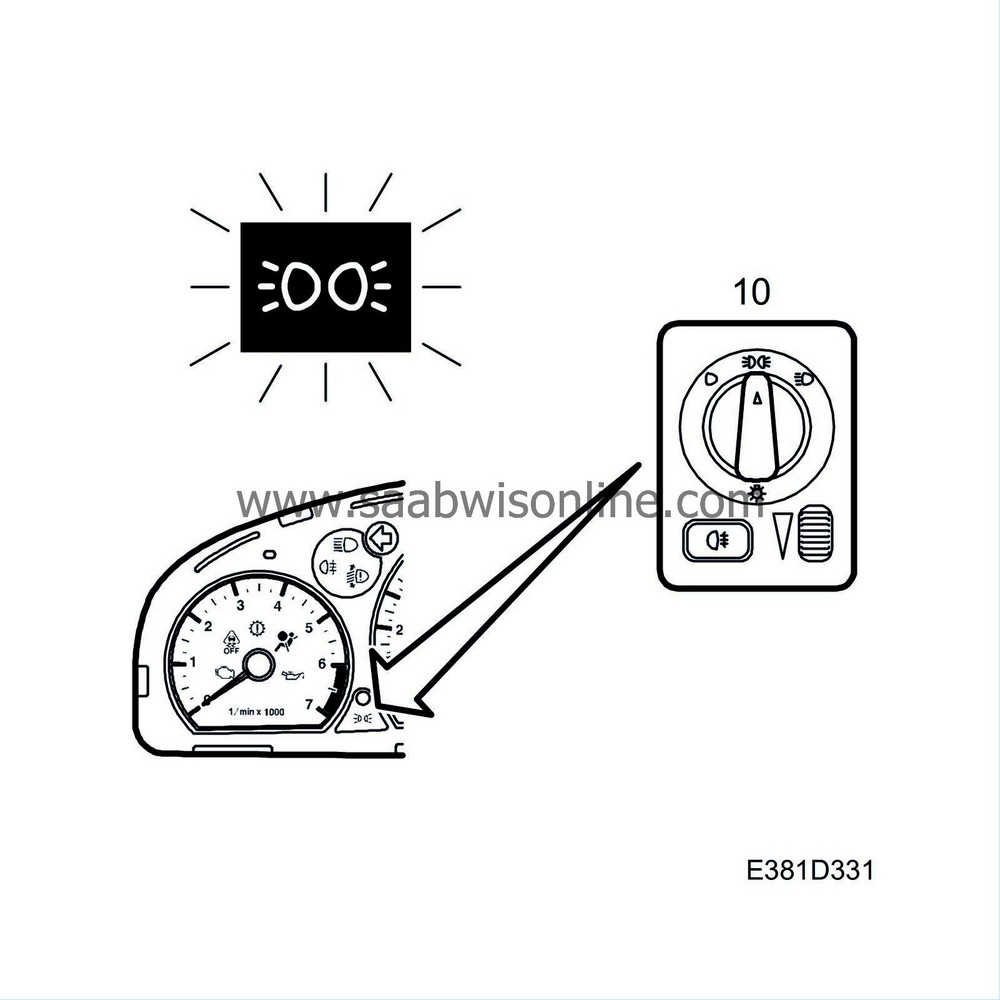
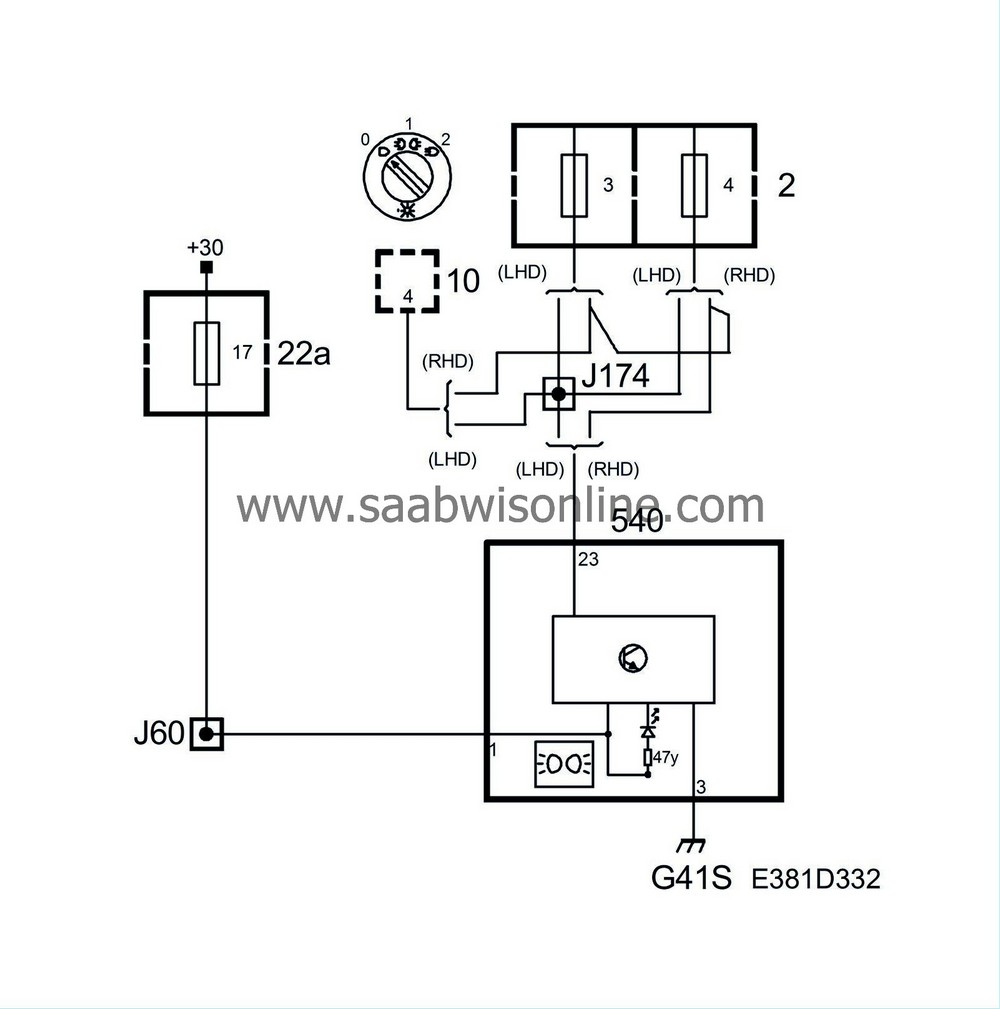
An indicator lamp shows when the headlights are switched on. The lamp is located on the lower edge to the left of the speedometer.
The lamp is powered from the main instrument unit and grounded internally by the main instrument unit. The indicator lamp is turned on by the control module when the main instrument unit input (pin 23) is powered with B+ from the light switch.
Diagnosis
The function has no diagnostics.| Indicator lamp, rear fog light |
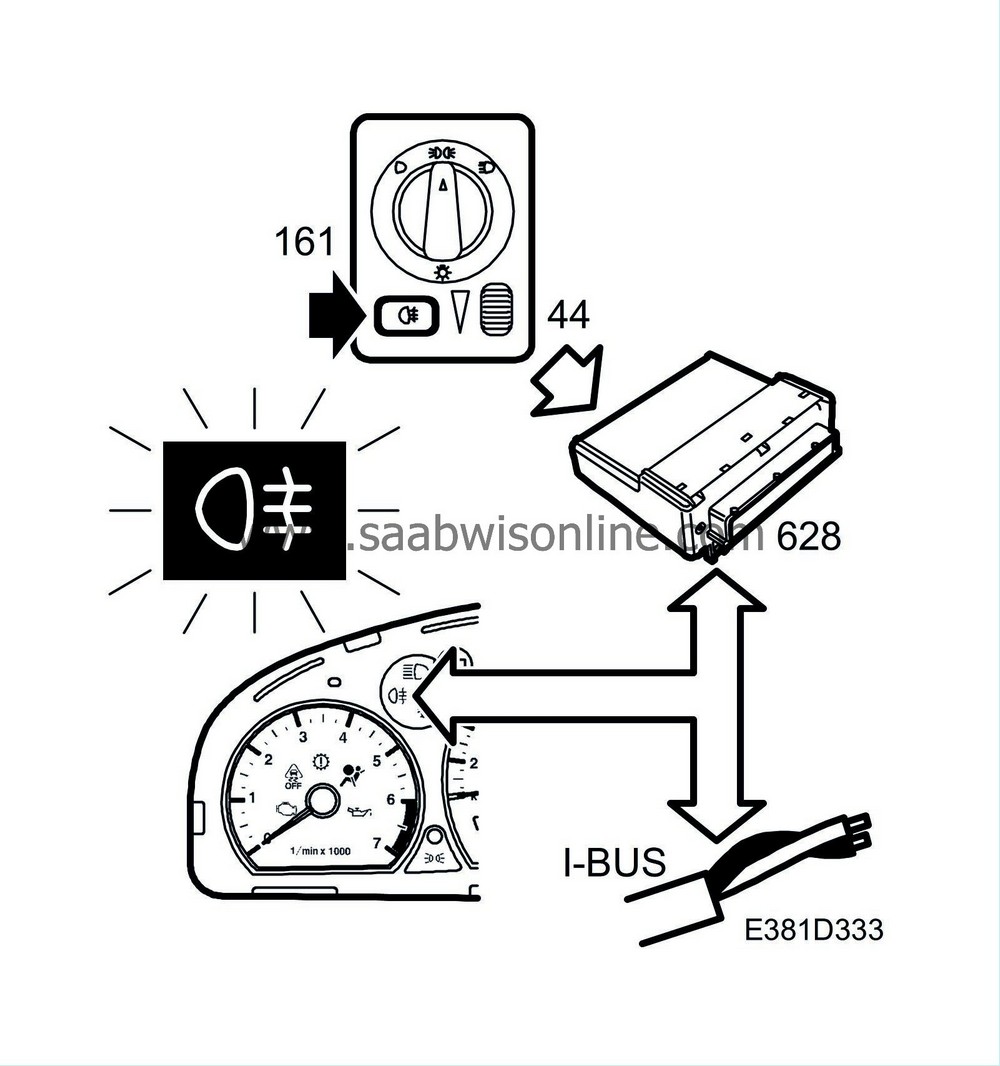
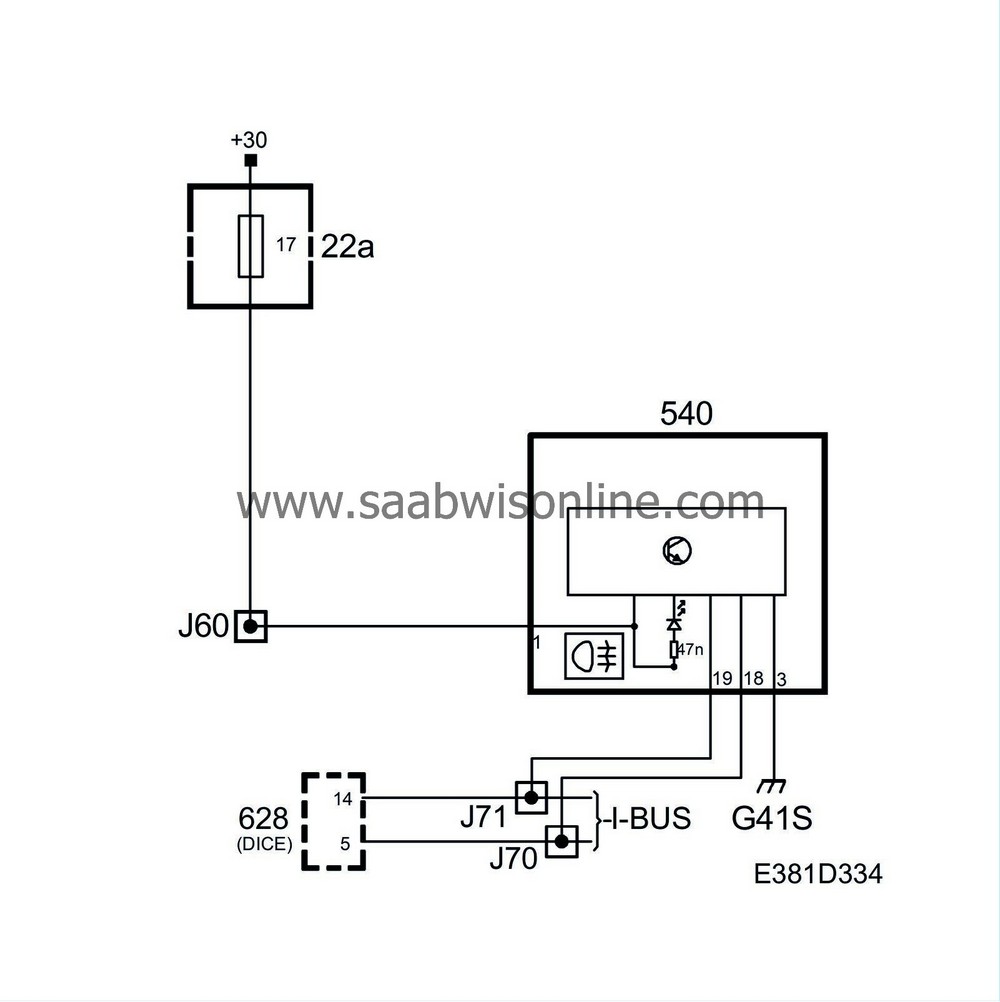
The rear fog light indicator lamp is located in the upper left hand section of the main instrument unit and shows when the rear fog light is switched on.
The lamp is powered from the main instrument unit and grounded internally by the main instrument unit. DICE continuously sends bus information REAR FOG LIGHT, unit ON/OFF.
On receiving REAR FOG LIGHT ON, the control module grounds the output of the lamp which then lights up.
If DICE changes the status of the bus information to REAR FOG LIGHT OFF, the lamp goes out.
Diagnosis
The function has its own diagnostics in the sending system.| Main beam indicator lamp |
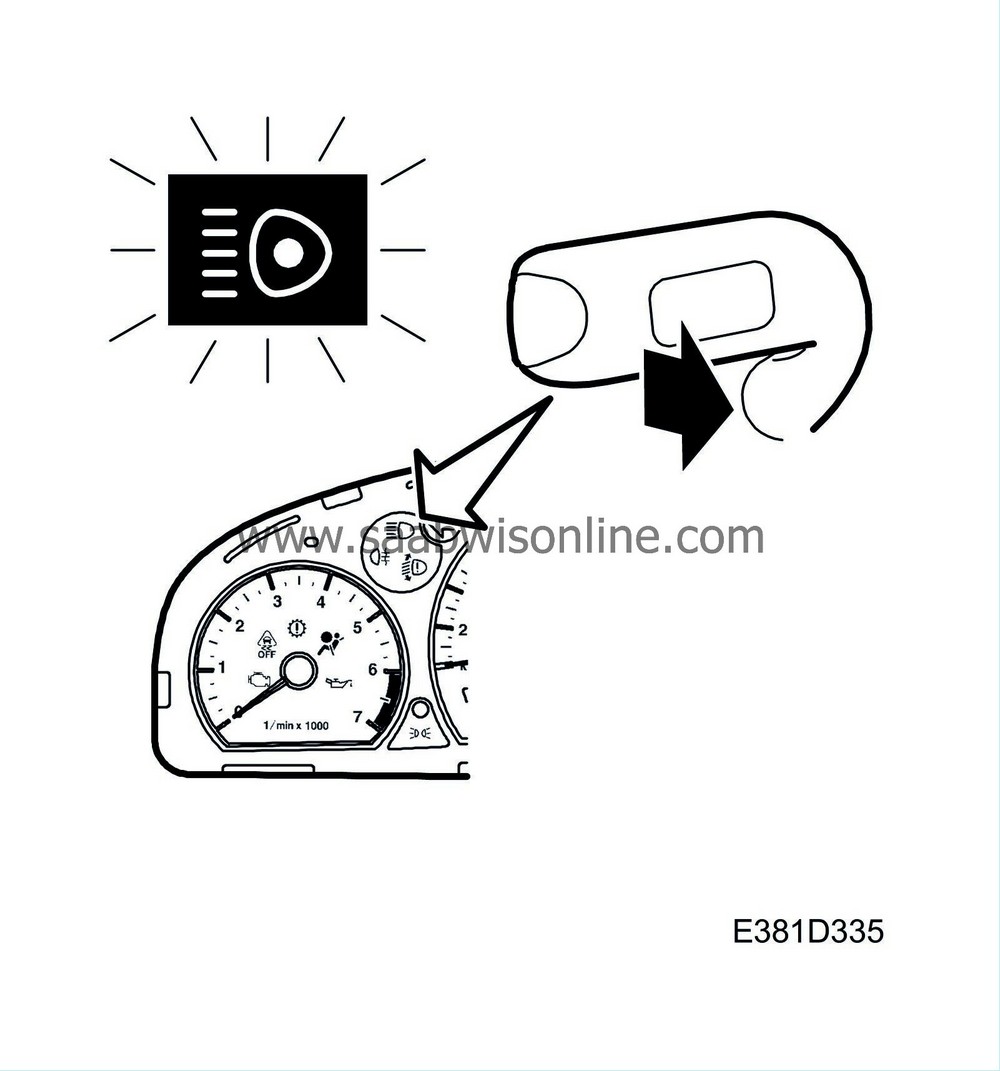
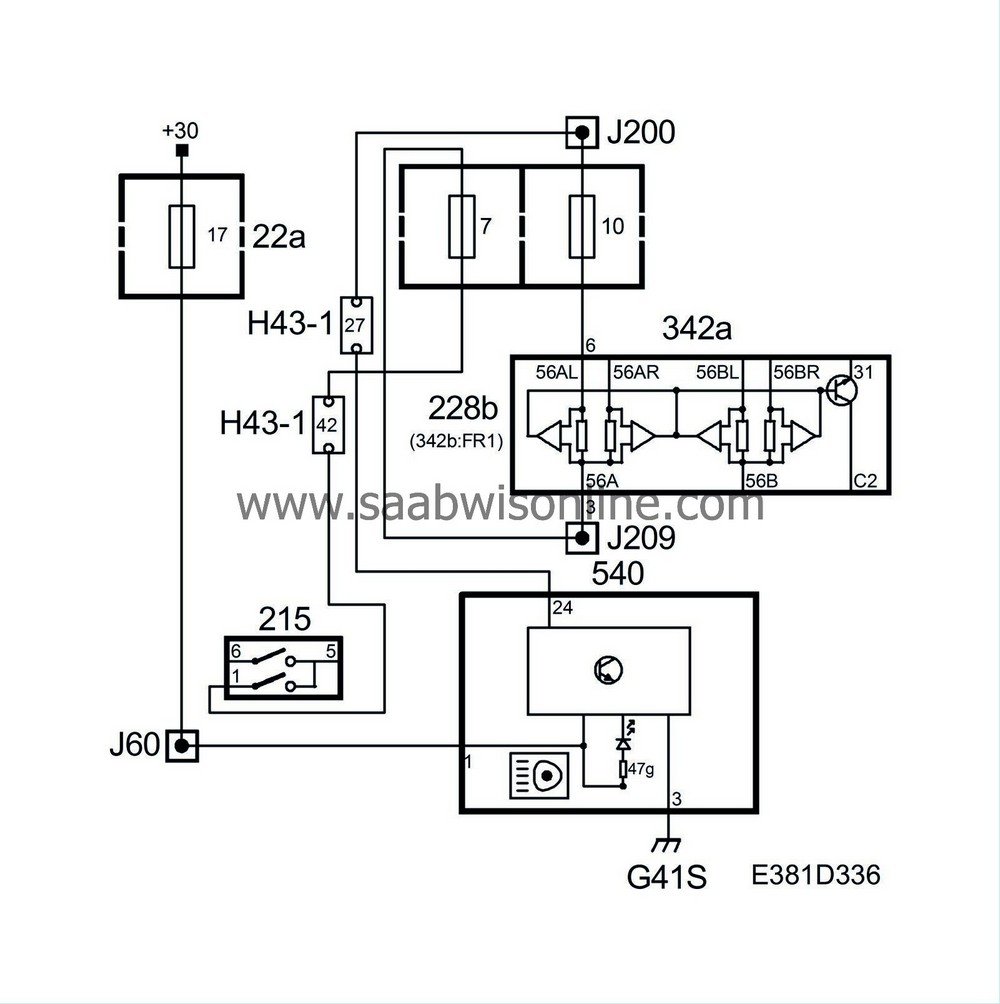
The indicator lamp is located in the upper left hand section of the main instrument unit and shows when the main beam headlights are switched on.
The lamp is powered from the main instrument unit and grounded internally by the main instrument unit. The indicator lamp is turned on by the control module when the main instrument unit input (pin 24) is powered with B+ from the main beam fuse 10.
Diagnosis
The function has no diagnostics.| Xenon lamp system indicator |
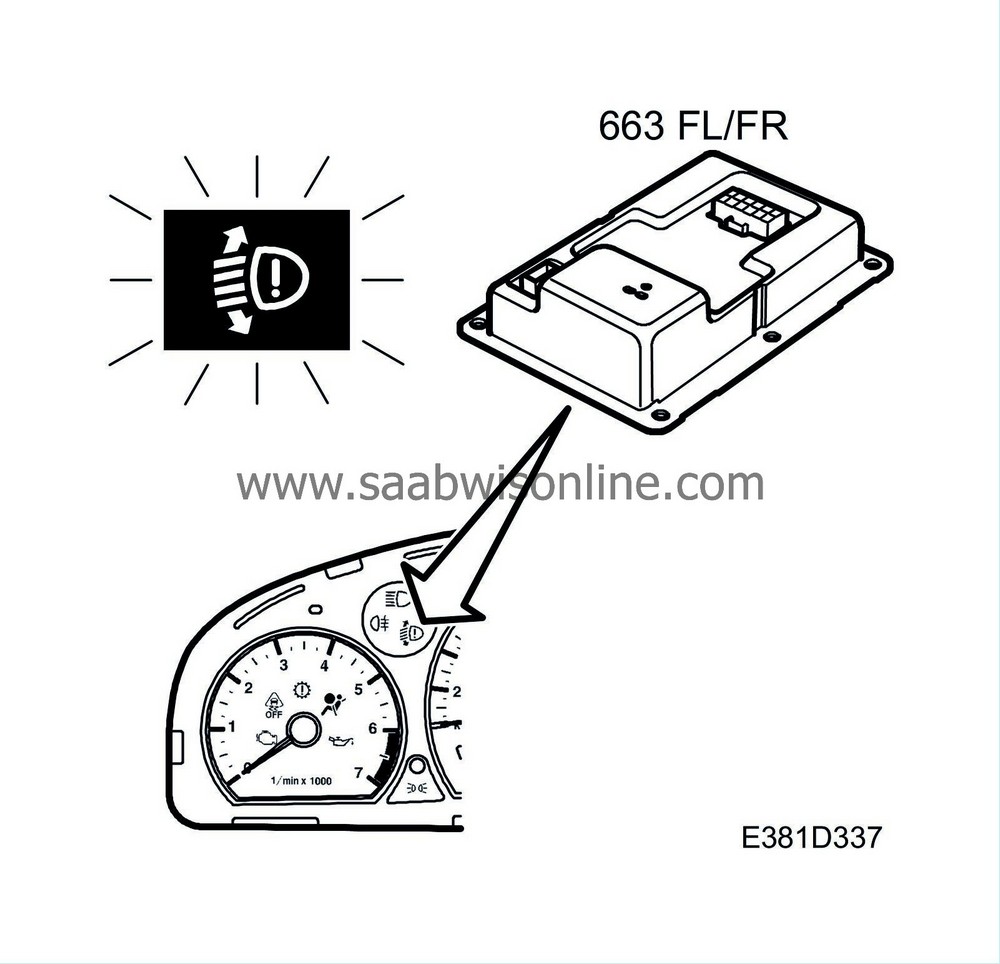
The indicator lamp warns the driver of a fault in the xenon lighting and automatic headlamp adjustment system.
The lamp is supplied from the main instrument unit and is grounded via pin 16 of the headlight control module if there is a system fault.
Diagnosis
The function has no diagnostics.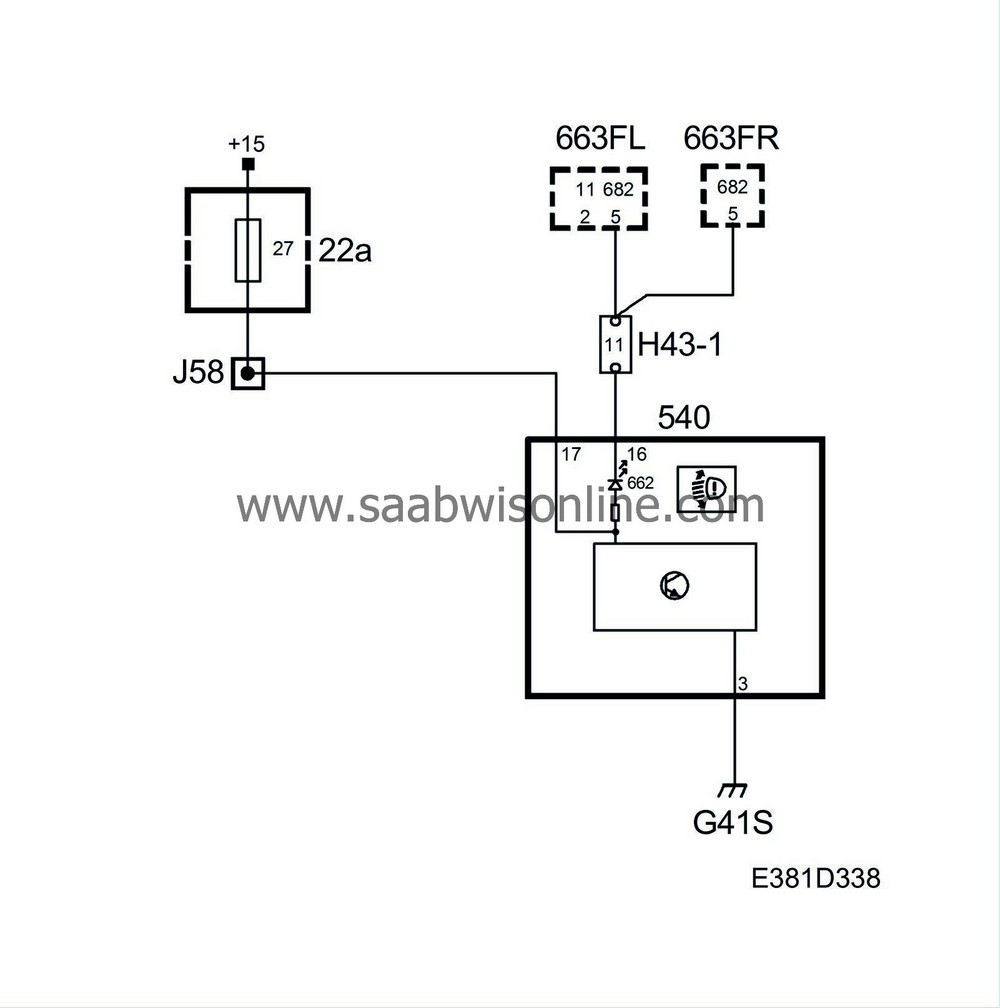
| Selector lever position indicator, information display |
Cars with Sentronic
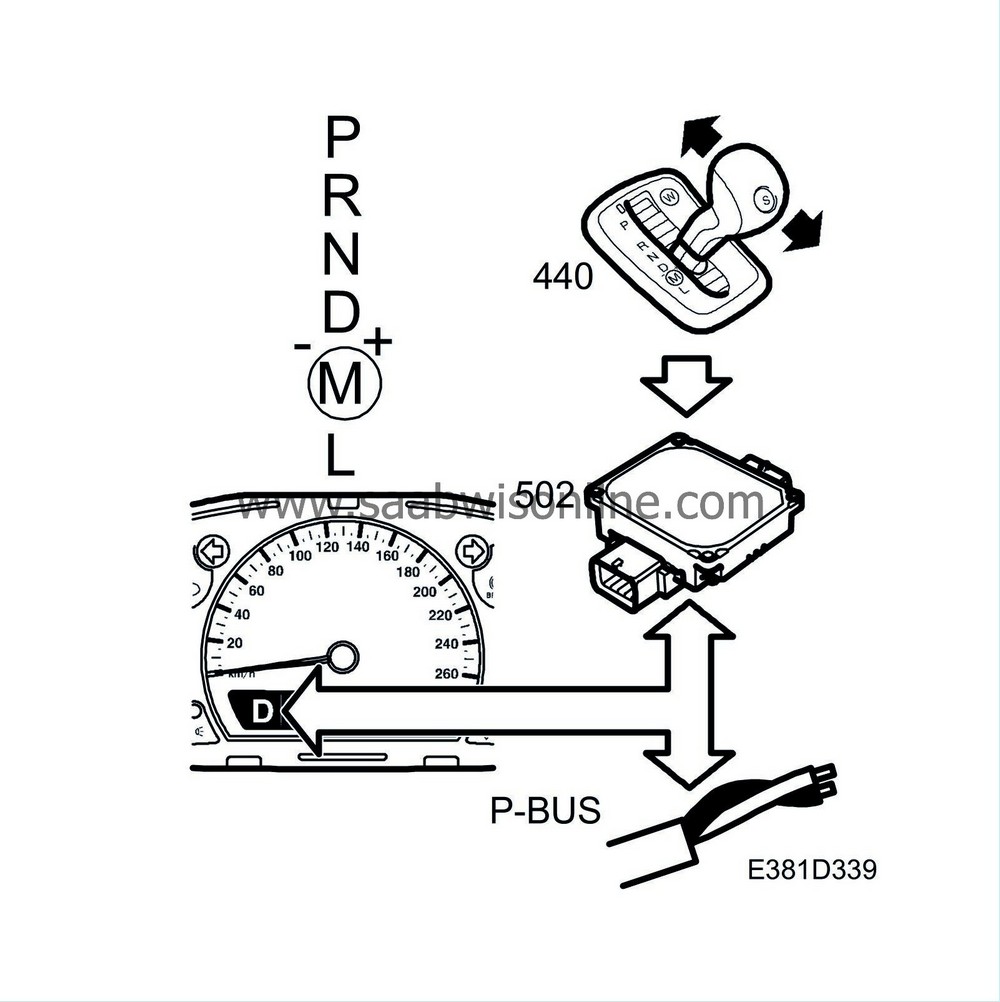
Cars without Sentronic
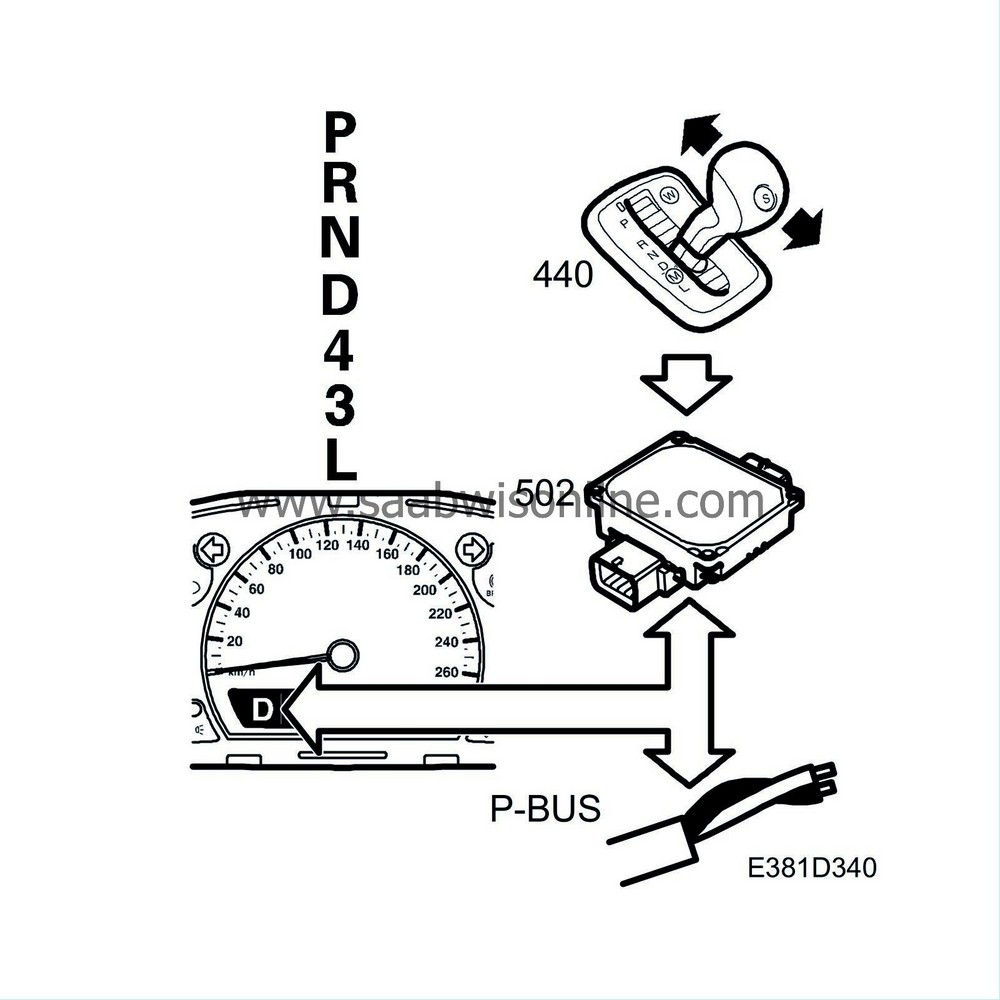
On cars with an automatic transmission the gear selector position indicator shows the selector position on the information display. If the manual position M is selected, the indicator also shows which gear is selected (1-5).
Cars with Sentronic: The gear positions are indicated on the information display with the symbols P,R,N,D,L or M1-M5.
Cars without Sentronic: The gear positions are indicated on the information display with the symbols P,R,N,D,4,3, L.
The background lighting intensity of the display is controlled by the rheostat value.
The TCM continuously sends bus information about the selector lever position, value "P,R,N,D,M,L" or "P,R,N,D,4,3,L".
Diagnosis
The function has its own diagnostics in the sending system.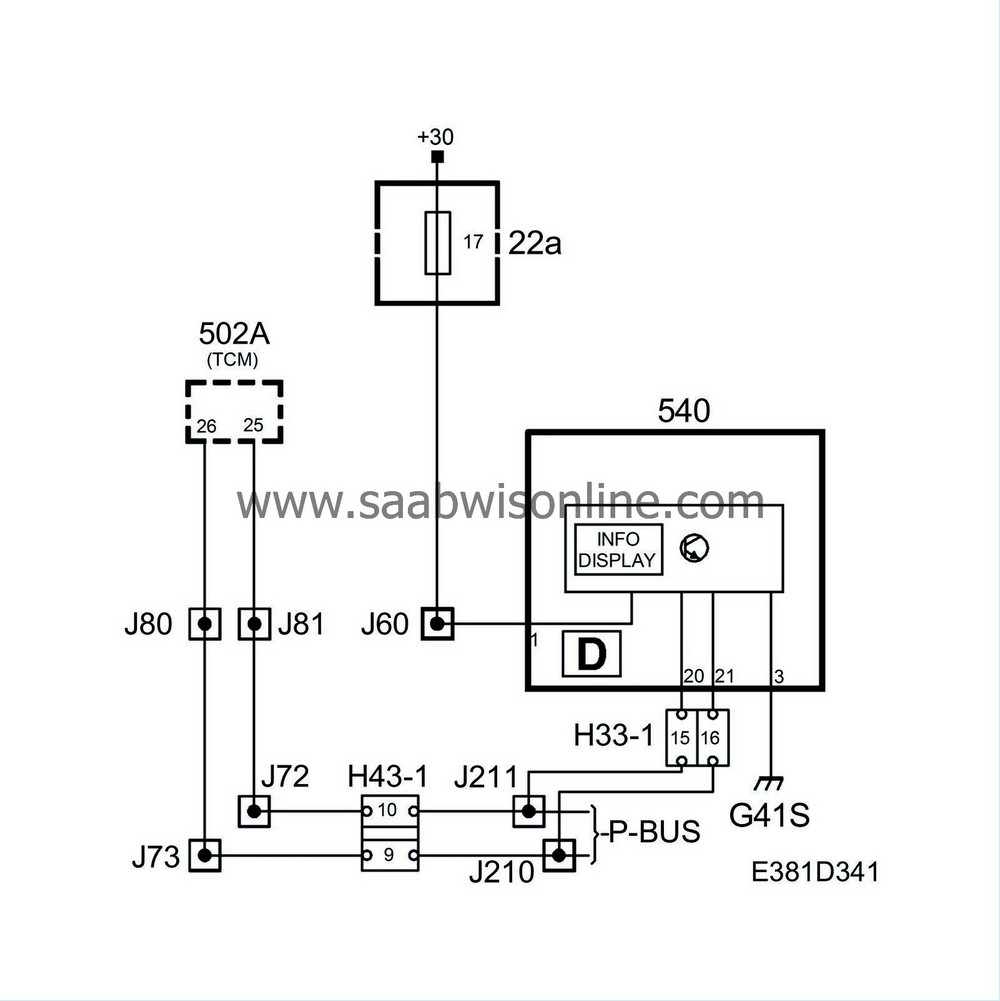
| Door indicator, information display |
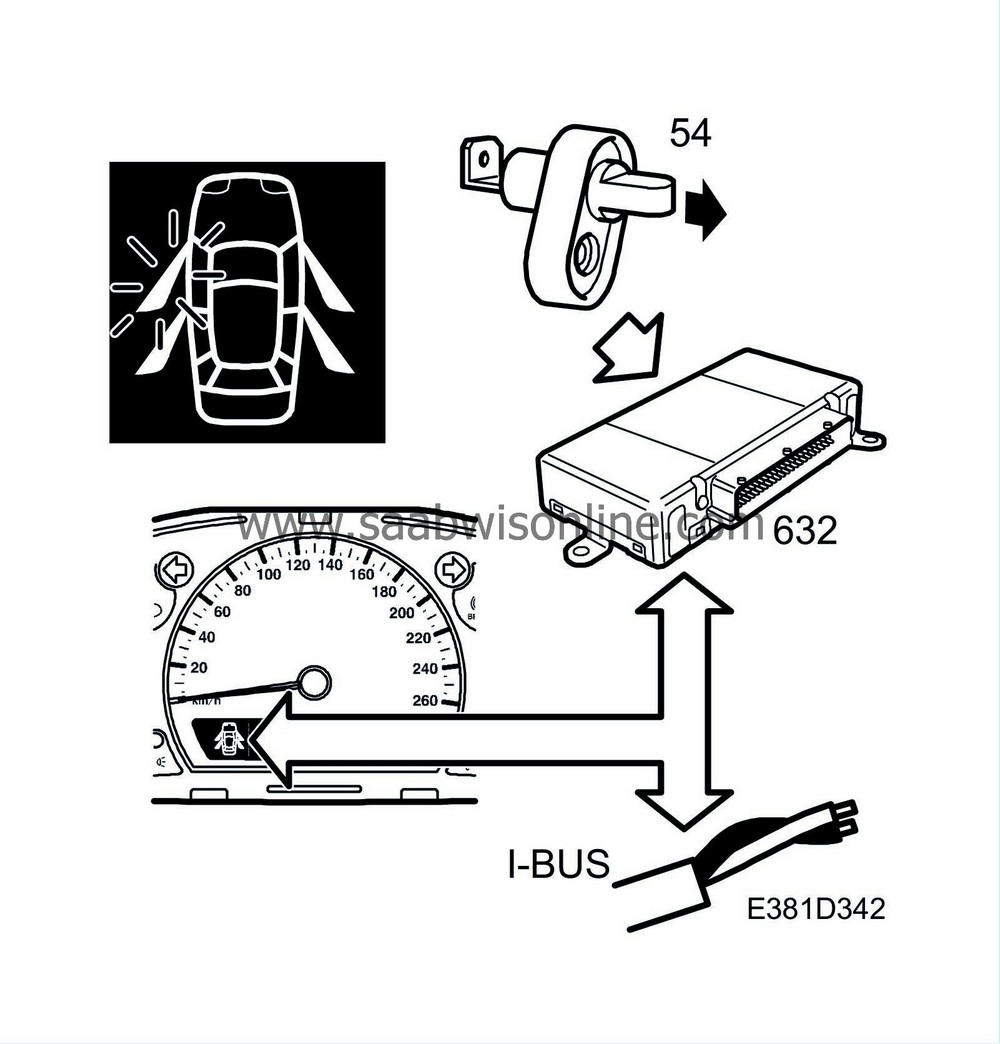
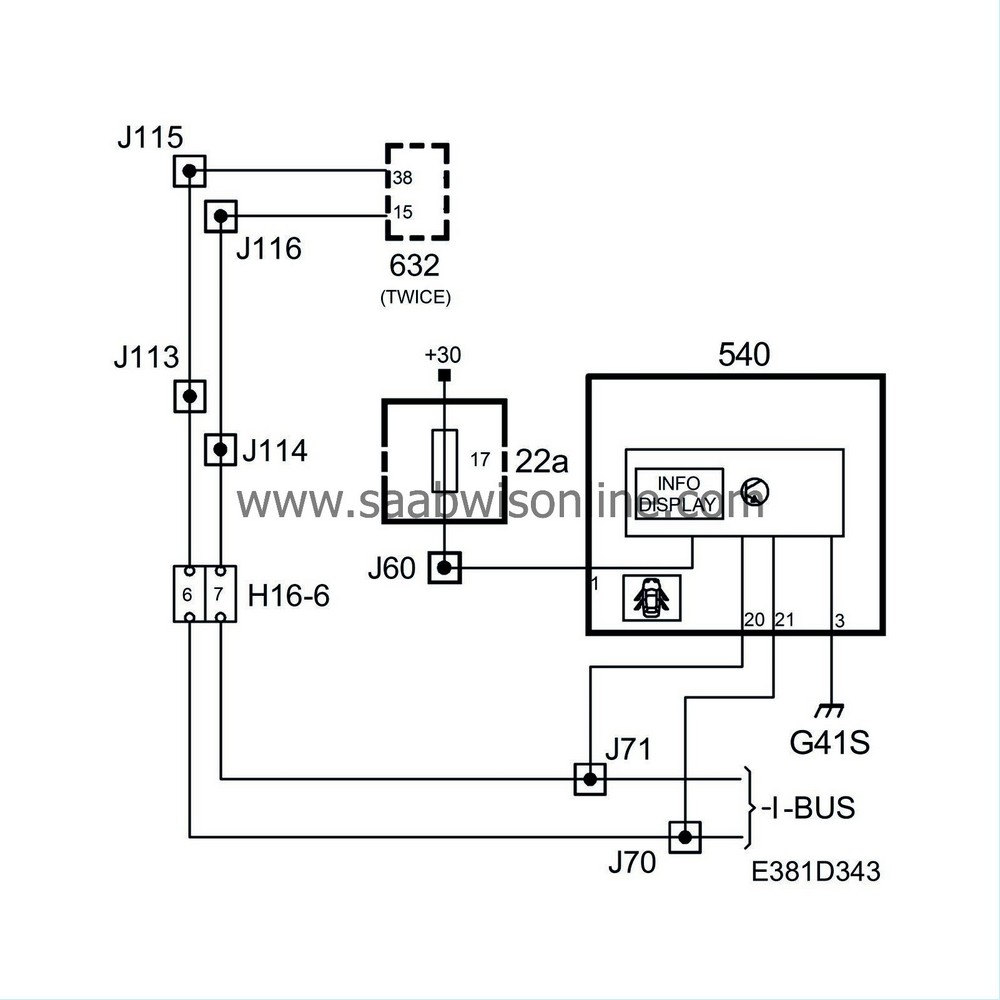
The door indicator pictogram is displayed if any door or the tailgate is open. The door indicator symbols have an orange background illumination.
The background lighting intensity of the display is controlled by the rheostat value.
TWICE continuously sends bus information on the status of the doors and tailgate, unit OPEN/CLOSED.
Example
When the driver's door is open and the other doors and tailgate are closed, the following information is sent:
|
Driver's door
|
Open
|
|
|
Passenger's door
|
Closed
|
|
|
Rear door LH
|
Closed
|
|
|
Rear door RH
|
Closed
|
|
|
Tailgate
|
Closed
|
The car symbol always lights up if any door or the tailgate is open.
Diagnosis
The function has no diagnostics.| Parking heater indicator lamp. |
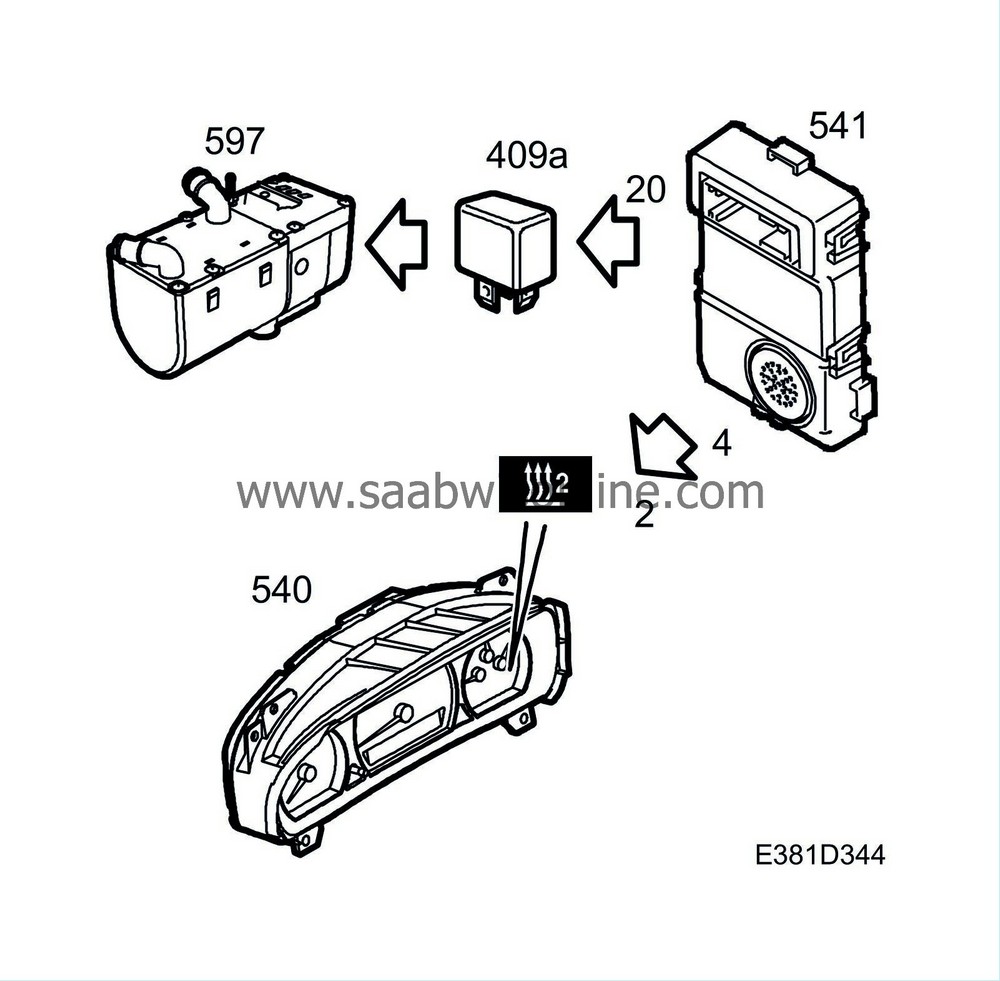
The parking heater indicator lamp is located on the right of the main instrument unit.
The indicator lamp is lit when the heater is active.
The lamp is supplied from the main instrument unit and grounded by the SID control module via pin 2 in the main instrument unit.
Diagnosis
The function has no diagnostics.